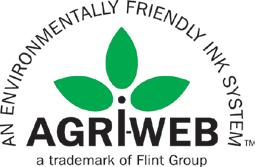










what CGMA stands for.
take your firM froM good to great 10
Best practices for staff, clients and processes make all the difference between good firms and great ones.
client retention StartS With Quality care 14

To keep clients coming back, you must tackle barriers to service and enhance communication and appreciation.
find your cpa Way 18
The CPA profession is marked by many different career phases. From the first job through retirement, learn how some VSCPA members followed the path.

The Financial Accounting Standards Board (FASB) has issued its long-awaited update to lease accounting guidance.
How do you take your firm to the next level? Learn best practices you can implement today to help your staff, clients and processes. And don’t forget how communication can help you maintain positive client relationships and further your business.

group
Society of
for
of the
virginia Society of cpas
4309 Cox Road
Glen Allen, VA 23060 (800) 733-8272
Fax: (804) 273-1741 vscpa.com
disclosures.vscpa.com
Jill Edmonds
Managing Editor disclosures@vscpa.com
Chip Knighton
Contributing Editor
cknighton@vscpa.com
David Bass Public Relations & Communications Director dbass@vscpa.com
Olaf Barthelmai, CPA
Adam Chaikin, CPA
Cheri David, CPA
Jennifer Eversole, CPA
Keith Gray, CPA
Genevieve Hancock
Alesia Lewis, CPA
David Peters, CPA
Mark Plostock, CPA
George Strudgeon, CPA
Barbara Sukramani, CPA
Articles and advertising for future issues are due by 5 p.m. on the following dates:
Sept./Oct. 2016 July 5, 2016
Nov./Dec. 2015 Sept. 1, 2016
Jan./Feb. 2017 Nov. 1, 2016
March/April 2017 Jan. 2, 2017
May/June 2017 March 1, 2017
July/Aug. 2017 May 1, 2017
Statements of fact and opinion are made by the authors alone and do not imply an opinion on the part of the officers, members or editorial staff.
How exciting to see that my financial adviser is as respected and admired by his colleagues as he is by this client! He is a special person.
— In response to a post on Jim Shepherd, the VSCPA’s 2016 Outstanding Member of the Year (see page 27)
Of all the great sessions at this conference, I enjoyed this one the most. — On the “ValuesBased Leadership: Living in the Moment” session at the VSCPA’s Business & Industry Conference
MaTT rIFFE, cpa Richmond
Congratulations Jim, wonderful tribute to a great CPA and individual! — On Jim Shepherd sTEphanIE saundErs, cpa Virginia Beach
FrOM the VsCpa COMMUniCatiOns sUrVey >>
“The branding of the VSCPA materials is very well done. I can tell the VSCPA materials at a glance and immediately know it will be a quality piece.”
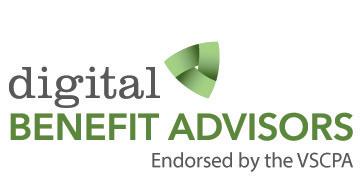
from the tWitterSphere >>
Thanks @StephPeters and @VSCPANews staff for leading with us in the profession! #vscpasummit16 #VSCPA2025 — @JLDernar
Great kickoff session & packed room of @VSCPANews rockstars! Looking forward to speaking tomorrow @ #VSCPASUMMIT16 — @keVinCsnyDer
Shout out to @VSCPANews! They highlighted our very own Steven Sawyer today. Check out his great tip for new leaders! — @MitCheLLWiGGins
Congrats to my friend Carolanne Petrusiak of @PBMares, one of top 5 CPAs under 35 as announced yesterday at @VSCPANews leadership summit! @CheryLhyDer
COnneCt: connect.vscpa.com tWitter: @VSCPANews, @FinancialFit LinkeDin: tinyurl.com/VSCPALinkedInGroup FaCeBOOk: facebook.com/VSCPA instaGraM: instagram.com/VSCPA
Get in touch at the virginia Society of cpas, we love to hear from you. Whether it’s a quick email to a staff member, chat on the phone, Disclosures letter to the editor, tweet, blog comment or something different altogether, let us know what you’re talking about, how you feel about different issues affecting cpas and how we can help.
tweet or something different altogether, let us know what you’re talking about, how you feel about different issues affecting cpas and how we can help.
If you read this magazine regularly, chances are you’re pretty familiar with the VSCPA’s advocacy efforts at the state level. From the annual CPA Assembly Day in January to tax conformity to bills like the repeal of the Virginia Department of Taxation’s debit card mandate for tax refunds, we’re active, vocal and not shy about our efforts to protect Virginia’s CPAs and taxpayers and improve their lives.
Our advocacy doesn’t end at the state border, though. Federal legislation can be just as impactful for CPAs in Virginia, and the VSCPA is tireless in its efforts to vet federal legislation, guide positive bills through Congress and monitor regulatory efforts that affect CPAs.
Because these issues tend to be slow-moving and relatively non-controversial, they don’t always get the publicity that our state efforts draw. So here’s what we’re dealing with at the federal level.
The VSCPA has been backing this legislation for several years in an effort to simplify tax laws for employees who work in multiple states, at one point convincing a bipartisan group of Virginia legislators — Republicans Dave Brat, Barbara Comstock, Randy Forbes, Bob Goodlatte, Scott Rigell and Rob Wittman and Democrats Don Beyer and Bobby Scott, all members of the U.S. House of Representatives — to sign on as cosponsors at various points.
As you can guess from the timeframe, we’re still working on this. The bill passed the House by voice vote in 2012, but did not advance in the Senate, and that’s as far as we and our partners have been able to move the issue. But we’re continuing to push for this common-
sense legislation, which would greatly simplify the tax responsibilities for employers, employees and states alike.
We’re also continuing to support the PATENT Act, a Senate bill that seeks to end the activities of so-called “patent trolls,” who use old patents to threaten legitimate businesses for using products or processes that they claim violate patents. That bill was most recently discussed in the Senate Committee on Small Business and Entrepreneurship, and the VSCPA will continue to fight for its passage.
Other issues we’re following at the federal level include human resources issues — such as “ban-the-box” job application bills, mandatory leave and other benefit issues that affect CPAs — and regulatory reform initiatives. The human resources issue includes the U.S. Department of Labor’s recent final rule that raised the salary threshold for overtime eligibility. And our oversight extends to the U.S. Supreme Court, notably pertaining to its 2015 ruling that a North Carolina state licensing board could not claim so-called “state action” immunity from antitrust laws.
While progress on the Mobile Workforce Act has been slow and incremental, we can point to a few notable successes in recent years.
There’s one that’s my favorite for multiple reasons, including the fact that it got me to the bill signing with President Barack Obama.
That was the America Invents Act of 2011, which banned the issuance of patents on tax strategies.
While it was a thrill to see the President, that’s not the main reason I love the bill. My favorite aspect of the effort to repeal tax patents is that it started with a VSCPA member. Mary Anne McElmurray, CPA, a tax director at Brown Edwards in Roanoke, first became aware of the issue of tax patents in 2006, and she found it unacceptable and unbelieveable because it limited the accessibility of the tax code. So she brought it to the VSCPA’s attention, and through dogged efforts from us and the American Institute of CPAs (AICPA) — a crucial partner in our federal lobbying efforts — the America Invents Act was born and shepherded through Congress and to the President’s desk.
It sounds hokey, but it’s true. One person truly can make a difference in the lives of many. And if you, like Mary Anne McElmurray, see an accounting-related law or regulation that you just can’t believe is in place, the VSCPA is here to fight on your behalf. n
stephanie peters, Cae, has served as president and CEO of the Virginia Society of CPAs since 2007. speters@vscpa.com connect.vscpa.com/StephaniePeters @StephPeters
DISCLOSURES.VSCPA.COM
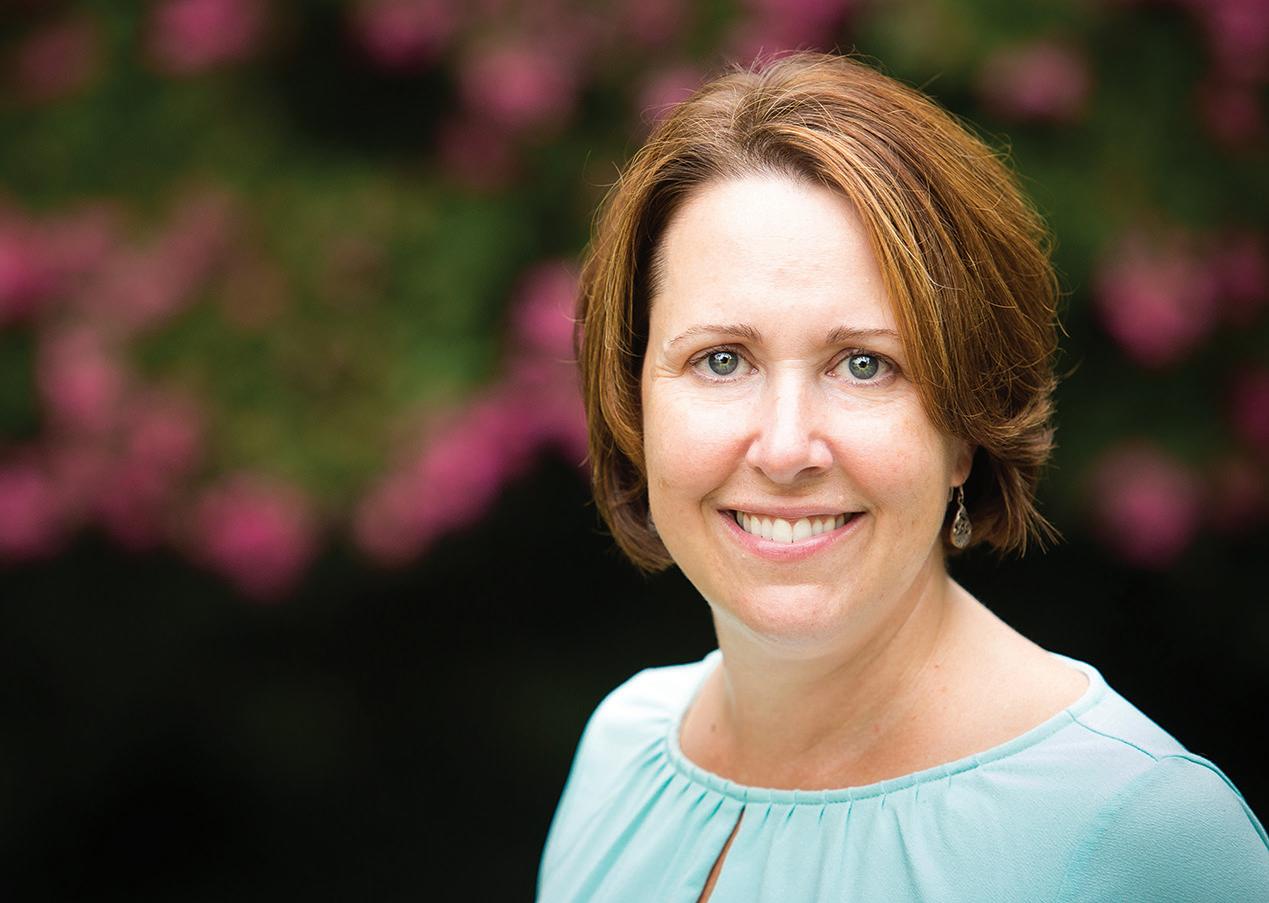
There are so many great tourist attractions in Virginia: the beach, the mountains, historic sites, outdoor recreation and much, much more. The numbers prove how attractive Virginia is to tourists. In 2015, tourism was a $23 billion industry for lodging, transportation, food and recreation, according to the U.S. Travel Association. Forty-one million domestic visitors supported 222,600 jobs.

Despite its ranking of No. 9 among the states and Washington, D.C., in tourist spending, the Commonwealth only spends $18.6 million on tourism (ranking it No. 21). Around the state, plans are underway to boost Virginia’s tourism draw. Check out “More Than ‘Fun and Games,’” an in-depth article on the Commonwealth’s efforts in Virginia Business magazine, at tinyurl.com/VATourism. n

Good news for the VSCPA’s online users! Last month, vscpa.com launched My Account, a new hub for your online profiles, payment and CPE settings where you can manage your information from one convenient online location. Through the new My Account, you can change your online account password, manage your membership, view upcoming CPE courses and CPE course history, edit email and mail preferences, update personal and firm info and manage online payment settings. Access the My Account page at vscpa.com/Myaccount. n
On May 18, the U.S. Department of Labor (DOL) released its final rule for overtime pay — dramatically increasing salary thresholds for exemption. Companies have until Dec. 1, 2016, to reclassify employees as nonexempt and implement the changes. The American Institute of CPAs, VSCPA and other state societies have opposed the changes because of increased administrative burdens and increased payroll costs.
In May, the Public Company Accounting Oversight Board (PCAOB) released revised changes to the auditors’ report, which include several enhancements, such as communicating critical audit matters. The proposal retains the pass/fail model in the current auditors’ report. Comments are due to the PCAOB by Aug. 15.
The U.S. Securities & Exchange Commission (SEC) has approved PCAOB rules adopted in December 2015 that require audit firms to disclose the name of the engagement partner for all public company audits on or after Jan. 31, 2017.
A new Revenue Procedure from the U.S. Internal Revenue Service (IRS) (Rev. Proc. 2016-29) modifies and updates the list of automatic changes in accounting procedure addressed in previous releases. Check out the document on irs.gov for the full list.
In May, the IRS warned taxpayers about bogus phone calls from IRS impersonators demanding payment for a nonexistent tax called the “Federal Student Tax,” and reminded taxpayers that the IRS will never call and demand payment over the phone for any reason. n

How does your firm stack up against others in the profession? Curious about the latest technology trends in firms around the country? How are you and others leveraging staff in the current economy? Find out by taking part in the CPA profession’s premier benchmarking study — the AICPA PCPS CPA. com National MAP Survey.
The survey covers key practice management issues that will allow your firm to compare its financial performance and operations to other firms, as well as gain strategic insights into building a more profitable and rewarding practice. Each participant will receive a free, personalized report containing an overview of key performance metrics from the survey.
the survey will remain open through July and can be accessed at aicpa.org/mapsurvey. n

The “Internet of Things” — or IoT — is cropping up in a lot of technology-related articles and around the Web. But what is it? Essentially, the term refers to objects that have some type of sensitivity or connectivity to link them online. So, a fitness wearable is part of IoT, as is a thermostat that intuitively adjusts the temperature of your house and sends you updates on your smartphone. According to Wikipedia, “the IoT allows objects to be sensed and controlled remotely across existing network infrastructure, creating opportunities for more direct integration of the physical world into computer-based systems, and resulting in improved efficiency, accuracy and economic benefit.” n
The VSCPA wants to hear from you on leadership, staff development and organizational culture. We’re collecting responses through our Leadership Culture survey, open through mid-July. Visit vscpa.com/CpaCulture to take this short survey. Share the link with your peers! n
In this age of collaboration, I often find myself in meetings where someone will project a spreadsheet up on the wall to engage the group. While this is a great way to leverage the collective knowledge of the group, here are a few Excel tips the presenter should consider using.
MOre spaCe: You want as much space devoted to the spreadsheet as possible. To free up the space used by the toolbar, you can hide it by clicking on the up-caret “^” in the lower right corner of your tool bar. Clicking on a menu header will provide you temporary access to complete an action, which will then hide again. To bring back the toolbar permanently, access one of the menu headers and click on the push pin icon (where you found the up-caret). Also, there is either a down- or up-caret in the formula bar on the right side that you can use to expand or contract, respectively, as needed.
size Matters: You will want to quickly zoom in and out, depending upon what participants want to see. While you can use the little plus and minus in the lower-right corner of the workbook to zoom, I have found that holding down the Ctrl key and moving the wheel on the mouse at the same time is quicker and easier. This trick works on most applications for Windows.
Hopefully, with these tips, your collaborative meetings will be more professional and give you the competitive edge over others who do not read Disclosures n
GeOrGe D. strUDGeOn, Cpa, CGFM, is an audit director at the Virginia Auditor of Public Accounts in Richmond. Email him if you have Excel topics you want him to cover.
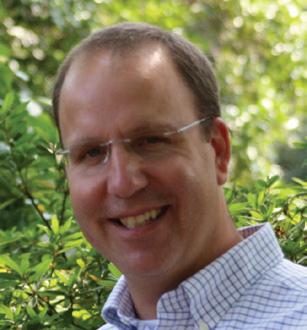
george.strudgeon@gmail.com connect.vscpa.com/GeorgeStrudgeon
DISCLOSURES.VSCPA.COM
we need your feedback!
we love to send emails. A 2015 study by The Radicati Group estimates that 55 percent of the more than 205 billion emails sent and received each day worldwide are business-related. So the average person receives 122 business-related emails per day! The same study predicts these numbers will grow by 5 percent each year through 2019. That’s a lot of reading.

If you are trying to market a financial services firm, these numbers create an interesting conundrum. Email is an easy and cost-efficient way to reach your customers. In industries where it is sometimes hard for the customer to tell one firm from another, like insurance, financial planning or accounting, an email blast with relevant and insightful information for your clients can help set your firm away from the pack.
But how do you make your email stand out from the other 121 the receiver gets that day? How can you leverage the cost efficiencies of email marketing without getting your message caught in spam folders or instantly deleted? While there are no guaranteed methods for higher returns on your email marketing investment, quantitative research can help us form some guidelines to increase our chances of success.
A recent study by the Database Marketing Institute shows that the highest open rate percentage occurs when companies send two emails per month. Sending two emails per month yields an open rate just under 20 percent of the time. However, sending one email per month results in an open rate of only about 12 percent, while adding a third email results in an open rate of 16 percent. Additional emails beyond three generally result in lower and lower open rates. Two emails per month are necessary to remain relevant in clients’ minds, but you start to become annoying if you begin to send additional communication. Therefore, financial services firms should consider prioritizing their email messaging. If clients are the most receptive to two emails only, which two messages are the most important for them to receive?
People tend to pay more attention when messages are tailored specifically to them. According to campaignmotor.com, an email with a personalized subject line has a 26 percent higher open rate. Similarly, a 2015 Experian study found that personalizing emails results in six times higher transaction rates. The bottom line is that the more customization you can do with your email messaging, the better. Before blasting a message out to your entire client base, think about which clients would benefit most. Which clients will get the most out of this message? Are there certain clients who should be taken off the distribution list?
Your clients are not mind readers, yet too often we assume they know what we mean. It may sound simplistic, but including a large, clear call to action button at the bottom of an email, rather than just a hyperlink, can improve conversion rates by up to 28 percent, according to campaignmonitor. com. In other words, if your goal is to get people to set an appointment, add a button to your email that actually says “Click here to set an appointment.” Don’t assume your clients implicitly know what you want them to do. They probably don’t.
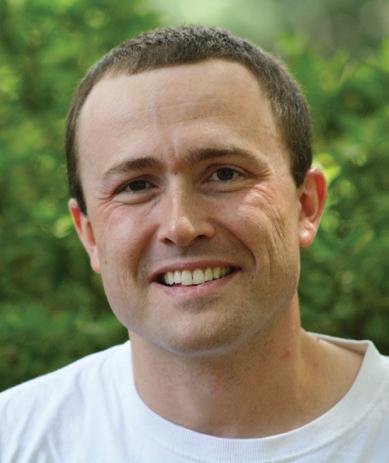
The key to successful email marketing is discernment and time. Sending out anything and everything to clients will make them less receptive, even if you are sending them quality content. People want simple, personalized, clear messages. Admittedly, this takes effort. However, if you take the time to do this, email can become a key part of your marketing strategy. Your email can be the one the client chooses to read. n
DaViD peters, Cpa, is the strategic relationship manager and financial advisor for Carroll Financial Inc., in Charlotte, N.C. He is also an adjunct professor in accounting, insurance and ethics, a doctoral student in financial planning and sits on the Disclosures Editorial Task Force. dpeters@carrollfinancial.com connect.vscpa.com/DavidPeters carrollfinancial.com
The information discussed herein is general in nature and provided for informational purposes only. There is no guarantee as to its accuracy or completeness. Nothing in this article constitutes an offer to sell or a solicitation of any offer to buy any type of securities. Registered Representative of and securities offered through Cetera Advisors Network, LLC, Member SIPC/FINRA. Advisory services offered through Carroll Financial Associates, Inc., a Registered Investment Advisor. Carroll Financial and Cetera Advisors Network, LLC are not affiliated.
Are you/your professional staff really at the right level where you should be/you need them to be?
Are you/your staff in a position that truly suits your/their personality, values, and professional and personal needs?
If you’re seriously interested in making the “right” move for your next hire, I can help you I am an actively licensed CPA in Maryland and Virginia with over 20 years of experience including public accounting (E&Y) and consulting (KPMG), financial accounting (American Cancer Society), internal audit (Moneyline Tele rate), and recruiting (Acsys, formerly Don Richards). As a networker who truly enjoys helping others and sharing my career experiences to guide fellow professionals, here is how I can help you:
Ask you questions, and most likely ask many more questions than other recruiters about your company, duties involved, skills required, corporate culture and more
Work with you on finding the “right” professional that is the “right fit”
Provide you with valuable information about the professionals I work with, the marketplace, what your competitors pay, and more
Guide you on career paths available in public accounting and industry
Enable you to capitalize on your strengths
Coach you on how to put your best foot forwa rd to find the “right fit”
Advise you when to stay in your current position if that is the right move
If you’re interested in working with a recruiter who understand s your background, skills, and is genuinely interested in helping you find the “right fit
then I welcome meeting you!
in CPA Firm, Accounting & Finance Positions in
DC
Connecting You To Your Next Hire TM Contingency & Retained Staffing Solutions matching skills, experience & values with needs

Improvement is an ongoing part of being in business, and the higher you reach, typically the better the result. The results are dependent on many factors, not the least of which are planning, timing and luck. Timing and luck are rarely under your control. That leaves planning, which is often what separates the great firms from the good.
Good firms certainly have much to be proud of. But there are ways good firms can plan and improve to make themselves great — by focusing on the differentiators that would be associated with high-performing firms in three primary areas: staff, clients and process.
Evaluating performance throughout the year allows for a system of accountability while setting the bar high. Annual and semiannual assessments are not sufficient and great firms understand that increasing the timing to 3–4 times a year will make an impact. During each of these assessments, a firm should have three goals for each evaluation period, or at least nine total. The timing of these goals will vary by the time of year. These assessments should vary by nature of responsibilities — tax versus audit, for example, and the level of experience dictates the goals. Great firms don’t restrict assessments to staff members either. It’s important for all employees, including partners, to receive assessments.
The better someone feels about their contribution, the more significant the results. Great firms create bonus plans and reward programs tied to achievements to motivate and heighten the likelihood of attaining results. They incentivize employees by providing monetary or other tangible rewards like gift cards, theater tickets and so forth.
Compensation is awarded for both team-wide and individual levels. Great firms also know incentives should be calibrated to the bottom line of the firm so the percentage provided is not too high, but they should be substantial.
Job descriptions pave the way to efficiency and effectiveness. Great firms provide job descriptions for every level in the office, including owners and the managing director. They include not only the tasks required, but the experience expected. In addition to skills, they should include education — both formal and informal (on-the-job training, seminars, external training, etc.). Furthermore, great firms reinforce that if people do not perform to the level of the job description, there are consequences.
A strong key to retaining existing employees is adding additional employees who are liked by the existing team and are compatible. Great firms understand that recruiting succeeds best when many faces and voices are involved, so that current personnel are invested and that new hires can see for themselves with whom they will be working. The recruiting team of a great firm also acts as loyal alumni to their schools, and they’re very discerning about which universities will make sense to support.
Good firms have initiatives that are driven by owners; better firms have initiatives driven by a collective process between the owners and employees. Whether it is an initiative to go paperless, move to cloud computing or recruit talent, great firms employ a “blending” between different staff levels and create a task force divided into specific responsibilities, within a certain time period and/or certain dimension.
The client service experience is a crucial differentiator between accounting firms. The more aware you are of the needs and perceptions of your clients, especially the new ones, the more you will bolster the service experience. During the first three months of a new client relationship, great firms engage in a monthly check-in process, followed by quarterly check-ins for the duration of the first year of service. They use a list of standard questions to review during 30-day checkins with no more than 3–5 questions based on the client’s comforts, needs and firm’s responsiveness. Anything learned during the check-ins should be followed up on immediately.
Great firms know that both firm and client operate best when there is an agreed-upon calendar of commitment for work. Most business clients typically have work being done throughout year. There might be more that needs to be delivered during a certain week of each month or quarter, but it should be mutually agreed upon when the firm will have have X, Y or Z ready. On the flip side, the client must provide the necessary information/ documents to have X, Y or Z ready in a timely manner. This allows for coordination of deliverables, project necessities and turnaround times.
Accountability is at the heart of great firms and their clients’ business. When shared, it runs both ways from the firm to the client and from the client to the firm. If the client doesn’t deliver what is needed, the firm should have the right to extend the deliverable time or exercise other potential options. If a client doesn’t meet its timeline, there could be a u
There are many good accounting firms out there, but there are far fewer great ones.
penalty imposed on the fee as well. If the firm fails to meet the timeline and the client has, then the client should enjoy a fee concession or other benefits. Mutual accountability forces both sides to do what is expected, which improves productivity and leads to even better results.
Understanding the priorities of clients and potential clients as well as investigating potential operational weaknesses is valuable to being a quality-driven business. Great firms employ focus groups as a resource to gain crucial strategic information and choose targeted participants and times for optimal response. They plan for the research most appropriately after a major deadline, when the performance of the firm is still fresh in the mind of the client.
One of the best ways for a firm to elevate itself above other firms is by having roundtables. Bringing clients together to discuss local business challenges and network along with community leaders (this often means well-known bankers and attorneys, for example, but can extend beyond that) is an opportunity not enough firms offer. Offering high-level, business-to-business conversations is a significant value-add for clients. Great firms see the roundtable program as a solid information tool to glean businesses’ topof-mind concerns, and they can use that information to better serve their clients, while also mine for new clients. The networking possibilities are endless, especially if the clients bring a prospect to the roundtable.
Better firms operate with an understanding that they want to be increasingly relevant to clients on an individual basis. Many a strong firm will work off an annual wish list for clients. The wish list will capture financial, operational and civic challenges. The list will be catalogued and monitored so that clients trust in the firm, and its personnel and satisfaction can be enhanced.
Many successful firms grade their clients as a means of profiling their practice, scheduling priorities and evaluating the financial performance of the practice. The better the metrics that are available, the more valuable the outcome of the grading process. Considerations might include: bill payment timeliness, realization levels, how often they buy more than the standard package of service, how often they seek more service, fees in excess of X and, of course, the level of referral/reference they provide. These grades help the elite firms determine the gold standard for their “model clients,” which would translate into criteria such as service level, fees, geography, niche, demographics and industry.
Turnaround time and satisfying expectations are vital to a strong operating system. The strongest of firms are deadline- and deliverable-oriented. They don’t miss due dates — they come in on time and before. Assigning due dates for client projects, internal projects and all actions are imperatives in the better firms. Beyond timing, setting goals ahead of a project, confirming the goals and memorializing the achieved goals or alternatives are standard in the stronger firms.
High-performing firms will make sure that the best clients are scheduled ahead of other clients. Scheduling priorities are not set to the seniority of the partner in charge but to client and project worthiness. Real-time based software is utilized to track, monitor and communicate.
Strong information flow is paramount for an outstanding service business. The better firms will standardize the type of individualized client correspondence that will be distributed for content, timing and method of distribution. There will also be
a follow-up protocol. Rigid reply times and tracking for follow up — whether calls, email or text — are essential. Nothing falls through the cracks. In addition to following up on firm-initiated communication, the firm would have a policy for returning calls, replying to emails and after-hours calls. These policies would be transparent for all who are involved — clients, potential clients, referral sources or internal. The better firms also follow a routine and regular internal dialogue system. Staff meetings, leadership meetings and owner meetings take place with regularity. Agendas are distributed in advance. Minutes are documented and shared with the applicable audiences within 48 hours. The meetings are expected to create discussion, not be restricted to reporting information. A constant at all staff, leadership and partner meetings is the topic of business expansion, the condition of the process as well as the results.
The road to strong profits in the better firms is paved with consistent methods and continuity of procedures. While every client is unique and all partners have their peeves and preferences, the more standardized the better. The best firms will have standard documentation policies, uniform acceptance criteria, required software packages, mandatory methods and regular monitoring for compliance. The better firms have honed the “Firm Way” in all the aspects of the firm’s delivery process from the technical to the administrative.
Understanding what makes your competition succeed and how they view their positioning is very useful to the better-performing firms. Canvassing centers of influence, monitoring social media, conversing with clients, networking at the local professional organizations, participating in firm associations and talking with potential new employees and partners are just some of the techniques used to learn about the competition. Many a strong firm has
become stronger by learning from peers and anticipating the competition. Niches have prospered, staffing enhanced and clients secured and/or maintained based upon awareness of marketplace conditions and the intelligence beneath the surface. The best firms will tactically evaluate and react to intelligence and place a priority on gathering information.

Great firms concentrate on embellishing their strengths with staff, clients and process all year round. Areas of emphasis are determined and leaders are tasked with the charge of achieving the goals and reporting back. Results are rewarded based on the degree
of success; failures are vetted out promptly. Compensation throughout the firm is strongly influenced by the goals and achievements of the firm. High-performing firms not only hit their goals, they know the right ones for the time and the resources of the firm.
If you are in a self-assessment mode, work now to pull your plan together with your own team or by working with a seasoned facilitator. If you are in the implementation process already, be very open minded at each and every process point. Continuously vet the original plan and course correct when needed. All firms can improve. It is up to you first to determine to become a great firm and then to implement a plan to make that happen. There is plenty of room for more great firms! n
ira s rOsenBLOOM, Cpa, is the chief operating executive of Optimum Strategies, LLC, a consulting firm focused on helping small and medium-sized CPA firms enhance business performance and profitability, and foster practice continuity.

ira@optimumstrategies.com
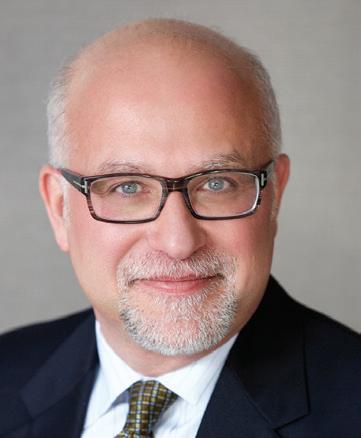
Cpe and camraderie
 by neena Shukla, cpa cfe, cgMa, fcpa
by neena Shukla, cpa cfe, cgMa, fcpa
You will often hear from leaders in professional service firms that a key challenge for them is business development and bringing in new business.
Success is driven by the competency in mastering these skills and building a firm culture where everyone participates in business development. But what happens after you have brought in that new client? Is there an equal focus on client retention? If not, there should be.
The general presumption is that the cost to acquire a new client is between four and 10 times more than keeping an existing one.
According to a survey conducted by The Sleeter Group, 72 percent of small business owners changed their CPA or accounting firms because the firm “did not give proactive advice, only reactive service.” If you ask CPAs why they think their clients left, they will mostly respond with, “because of the fees.” There is clearly a disconnect with understanding what clients want and why they are leaving. Understanding why clients leave and the ways to retain them are crucial to the success of professional service firms. By providing clients quality care, you keep them happy and make them stay.
Below are reasons a client may switch accounting firms and what firms can potentially do to retain them by providing client quality care.
A common saying heard from prospective clients when trying to win new business is, “I only hear from my CPA once a year.” The reason we often bring in new clients is the primary reason we are losing them — a lack of constant contact. CPAs often only reach out to clients when they need to prepare the tax return, prepare year-end financial statements or respond to a client question. But the most important question is: Why did the client
have to reach out to the CPA and why did the CPA not take the initiative to check in with the client to see how things are going? Clients perceive a lack of contact or initiative from their CPA as them not being important enough for the CPA to take an interest. A 15-minute monthly conversation with clients could help you build a rapport and learn what keeps them up at night, which goes a long way to building trust and providing exceptional client service.
There are many ways to regularly communicate with clients other than just picking up the phone, such as blogs, mailings, LinkedIn, Facebook content and live webinars. The more regular and informative the communication, the more effective it becomes. The client gets valuable information whilst building their perception of their CPA’s expertise. Regular communication provides confirmation to clients that we are thinking about them and genuinely care.
Clients often develop a loyalty to the staff and partners they deal with, especially when they are providing them with great service. When scheduling engagements, we should be cognizant of these relationships and try to assign the same people. This provides efficiencies because staff is familiar with the client’s business, but also ensures the client’s trust and loyalty continue to grow. Some clients switch firms because the person they dealt with left the firm and they no longer feel they are getting the same attention. While turnover is expected and inevitable in public accounting, being aware of the client’s relationship with staff will help the transition to other equally qualified staff. Reassure the client they will be taken care of. Tell them
they are important and that you are making it a priority to continue to provide them exceptional client service.
We are all busy and, especially during busy season, our mindsets can be about just getting through the day. We have all been there — working on something critical when a client’s call comes through, and we decide to put them through to voicemail. Or not answering client questions via email in a timely manner, or not meeting deadlines and having the client repeatedly reach out to ask about the status. The CPA sees it as managing their time to keep all their clients’ workloads on track. What we fail to realize is the message we are sending the client is that we are not available, we are indifferent — and the client is not our priority. Inaccessibility makes the client feel unappreciated and unhappy, making them more prone to take their business elsewhere.
Communicating effectively with your clients can overcome this perception. Build a firm culture where everyone strives to respond to emails in a timely manner — or, better still, pick up the phone and answer questions directly to avoid confusion and keep clients aware of their status on a routine basis so they don’t have to be the ones reaching out. Sure, there are going to be times you are juggling many tasks and cannot pick up the phone immediately, but sending out a quick note saying that you recognized they called and telling them when you will follow up can be enough to let the client know you are aware they called and are thinking about them. Clients want to know what is going on. Making it a priority to touch base and take clients out to lunch or networking at a sporting event shows them that you are u
available. By talking to clients on a personal level, they get to know more about you and they see you as more than just a CPA. This helps them connect to the CPA on different levels and will go a long way in helping them see you as a strategic advisor whom they can talk to freely about their business concerns.
A lot of clients may leave if they feel fees are high. But the majority of the time it’s not really the fees that are the concern, but instead the perceived value of the services the CPA provides. If a client does not understand what the CPA firm does, then they make assumptions about the value of the service. As a professional service firm, we provide clients with an intangible service that often they cannot see or feel.
It is our responsibility to talk to our clients and let them know what we are doing for them. While we may spend hours in the background working on their information, if the client does not know what we are doing then they do not know how to value those services and they will make their own assumptions. Sitting down with the client and explaining in detail what the process is, what the approach is and what is involved will help them understand and increase their perceived value of our services. Communicating with clients regularly and constantly providing them with valuable information throughout the year increases the perceived value of your services — more than just calling them once a year for tax preparation.
By communicating with clients, understanding their concerns and helping them identify their business issues, we may be able to find areas to provide them additional services. If they understand what we will be doing and why they need those services, they will be more than happy to pay for them.

Clients’ businesses are rapidly changing
through technology and innovation and, as CPAs who want to be seen as strategic advisors to our clients, we need to understand the way they do business. Successful CPA firms are leveraging technology to provide more efficient services in a timely manner. Firms need to evaluate their service offerings to include value-added services that their clients need in a timely manner — before clients go elsewhere. This may involve merging with another firm or hiring staff with non-traditional expertise to service existing clients as they grow.
Constantly talking to our clients allows us to know what they need and how we need to respond by adapting to their changing needs. A CPA firm may be capable of offering these additional services but may not be communicating this to the client. If a client thinks that their CPA firm only offers audit and tax services and there is no avenue for regular conversations, then they will go elsewhere to find solutions to their needs. At every opportunity, CPAs need to inform their clients of their service offerings and innovate their processes and services to meet their clients’ changing needs.
Many clients leave if they are unhappy with the work product, especially if they perceive that the CPA is constantly making mistakes. This can involve a lack of communication, constant staff turnover or just not listening to our clients. The client may have provided information that was somehow misplaced or misinterpreted and had the CPA communicated to the client ahead of time, the issues could have been timely resolved. Are we asking the right questions and getting to the right solution? Clients may seem demanding, but they do not expect you to be perfect — they just expect honesty. If something goes wrong, CPAs need to let the client know quickly and explain what happened and take responsibility. This is a situation where an email will not be the best method and either a phone call or a face-to-face meeting is
Remember: If you don't take care of your clients, someone else will.
needed so the client is reassured and can ask questions.
Developing a firm culture where technical excellence and quality service are always expected results in a better work product, more perceived value for services provided and more satisfied clients. A firm has to invest in keeping its professional staff current on industry developments and learning specialized skill sets in order to provide clients with advisory services and delve deeper into the services provided. The quality of the service you provide is what helps differentiate yourself from others. If your focus is to go above and beyond, clients will become enthusiastic referral sources and lifelong clients.
When‘s the last time you thanked your clients? A simple “Thank you!” shows your clients that you care about them and that they are appreciated. However, it is important to be genuine. There are many ways to express appreciation, from an email or handwritten note to a client appreciation event or even just showing up with a box of donuts. Building lasting client relationships is important to client retention. Letting clients know that you appreciate them builds trust and loyalty. Business is about people and people want to work with people they like. A CPA who takes the extra effort to show their appreciation for their clients is strengthening that relationship.

Communication and trust are the two main ingredients for a successful business relationship. There are many reasons why clients may leave, and at the heart of each of them is ineffective communication. To retain clients, CPAs must focus on providing clients quality care and must effectively communicate. Keeping in regular contact with clients is key; being proactive and taking the time to meet face-to-face to learn about their business shows them they are a top priority. Explaining to clients in detail what services we provide and letting them know what we do increases the perceived value of our services. Taking an innovative approach to our service offerings and use of technology allows us to provide value-added advisory services, quickly and efficiently, thereby adapting to our clients’ changing needs. Developing a firm culture of excellent quality and investing in staff technical and industry expertise shows clients we will go above and beyond to deliver more than what they expect. Appreciating clients builds and strengthens important client relationships. This is what makes clients stay when they know they have a strong and competent team who wants them to genuinely succeed.
Remember: If you don’t take care of your clients, someone else will. n
neena shUkLa, Cpa, CFe, CGMa, is senior assurance manager and government contracting niche leader at PBMares, LLP, in Fairfax. She is also the leader of the firm’s technical and emerging issues group.
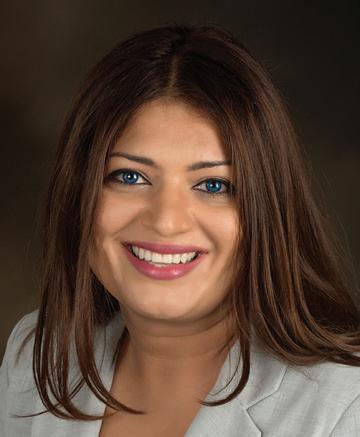
nshukla@pbmares.com connect.vscpa.com/NeenaShukla
The CPA profession is often marked by several different career phases.
 by chip knighton
by chip knighton
a career as a cpa is a lifelong journey. While you can use the credential to get into any number of niche positions, there’s a well-trod path through the public accounting field that’s open to anyone who can get their license.
It’s the age-old conundrum: You can’t get a job without experience, and you can’t get experience without a job. Fortunately for accountants, there’s a well-established internship structure that allows prospective employees to gain some experience and show off what they can do while learning more about the industry.

Internships mean different things at different employers, of course. But the way that an internship is structured and the demands placed on interns can say a great deal about a firm.
“With my firm, the internship was very flexible,” said Zach Felder, who interned at Mitchell Wiggins in Richmond before being hired full-time as a staff accountant last year. “It was ‘focus on your school.’ It was 20 hours a week, and I ended up working closer to 30 because I could and they had the work there for me. But it definitely was what landed me the job and also let me know that this is a place I would like to work.”
Michael Yankoski, CPA, was hired as a
staff accountant last year at McPhillips, Roberts & Deans in Norfolk. Before being hired full-time, he interned at the firm twice, between his junior and senior years at the University of Virginia (U.Va.) and between graduation and his master’s program.
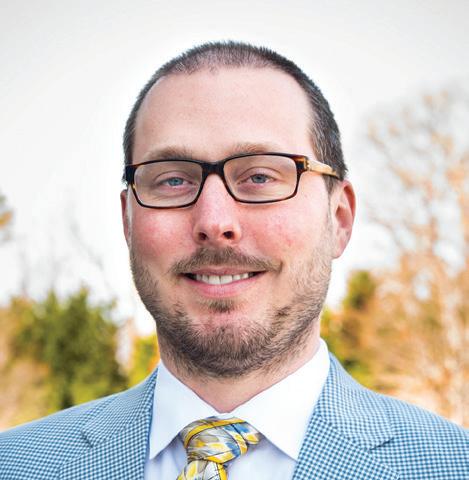
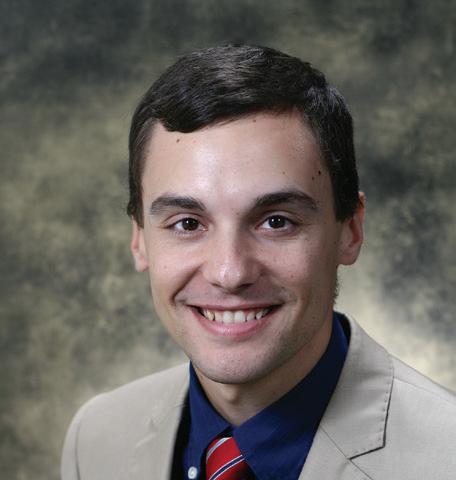
“It’s a two-month interview, in a way,” he said. “It’s not like they’re constantly trying to catch you, but you’re able to show your skill set more fully in a couple of months than in a couple of hours.”
Felder and Yankoski took different paths to the accounting profession. Yankoski, 25, followed the traditional path, completing the aforementioned five-year master’s degree through U.Va.’s McIntire School of Commerce. Felder, 34, spent several years in automotive equipment sales and worked his way through John Tyler Community College and Virginia Commonwealth University (VCU).
As their experiences show, both paths are valid ways to break into the profession with their own unique pros and cons. The traditional path is generally thought of as a better way to get into the Big Four firms, but non-traditional students still have plenty of career options if they perform well. In some ways, Felder said, it’s even an advantage. His work in auto sales, in particular, correlated well with Mitchell Wiggins’ auto dealership practice.
“Being a little bit older, some things were easier for me to pick up. I was a little bit better at seeing the big picture than someone without real-world experience,” he said.
“And it got me a little more in tune with
business structure, because I’d experienced that before — different sorts of businesses, how they operate. It made me a little more knowledgeable all around, a little older, a little bit grayer.”
Those traits even helped Felder bypass some programs Mitchell Wiggins makes available to its interns. Those programs are intended to help interns get a feel for the day-to-day life of a public accountant and gauge and develop skills related to client service — skills that Felder had already demonstrated in his previous jobs.
Felder got his résumé in order and landed the internship that led to full-time employment at Mitchell Wiggins. His trial period saw him put in charge of migrating and reconciling client data in a new system, and he says his performance was a “huge part of getting the job.”
While he was proving himself to the Mitchell Wiggins brass, he was also getting an idea of whether or not he wanted to work at the firm after the internship ended. His final post-internship interview covered how the internship changed his perspective and where he saw his career going. u
“The internship is a trial period not only for you, but for the company,” he said, “so you can feel out each other and see if it’s going to be a good fit both ways.”
So after you secure an internship and dazzle the higher-ups, you’ve still got to get through the interview process. An interesting résumé is a big part of that, and whether you’re trying to stay at the same firm or find a new employer, a little research goes a long way.
“Having had the opportunity to be in a few interviews this past recruiting season, but from the other side of the table, it is nice to
see when a candidate has done their research and knows something about your company and the company’s culture,” Yankoski said.
“Somebody who is asking questions which are more informed than, ‘What’s your main client base?’ is able to show that they care about the company they interview with, and that is good to see.”
What’s the key to success once you’ve got the job in hand? Don’t be afraid to seek out help. For Yankoski, that meant inquiring about the logistics of taking the CPA Exam. For Felder — who was halfway through the Exam when
this article was written — it had more to do with getting guidance on projects.
“Don’t be afraid to ask questions, because there is a big disconnect between what is taught in the classroom and what is enacted in the field,” he said. “That was the biggest thing for me to overcome. Being older, I like to think I know a thing or two, but being willing to ask questions and not sit there and spin your wheels figuring out everything out for yourself. I could have spent 10 hours figuring something out when 10 minutes of coaching and direction would have gotten me there.”
That brings us to the people in charge of answering those questions, and Bryan Campbell, CPA, is one of them. He was a staffer at Dixon Hughes Goodman from 2006–2011 after graduating from the University of Mary Washington, becoming a manager in 2011 before being promoted to senior manager in 2014.
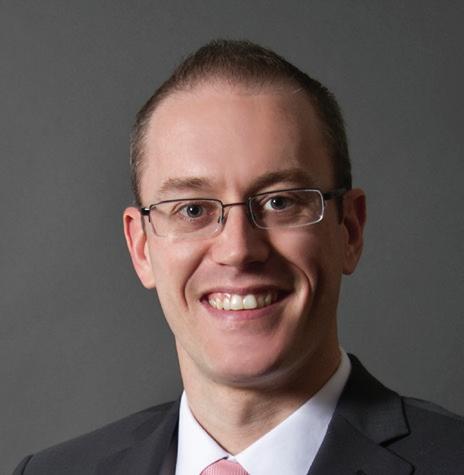
That’s two moves up the ladder from a staff position, and each one brought its own
responsibilities and challenges. The first promotion put Campbell, 32, into more of a leadership role, while the move to senior manager — which he described as a “future partner-type position jump” — brought increased responsibilities in mentoring and business development.
“I’ve been really lucky,” Campbell said. “The first client that I brought in was when I was a senior associate. Resourcefulness and business development have been keys for my career advancement. But that’s not always how you see it happen from a career progression perspective. You have to build the technical skills to get to manager, hone in on business development and eventually take on the senior manager and partner roles.”
Getting that promotion is about more than technical skills, of course. Running a team, supervising colleagues and getting the most productivity out of disparate personalities are major components of success at the manager level. That means identifying and nurturing talent are critical.
“The way that I was able to grow and grow quickly was to have a really good team of people working with me,” Campbell said. “If
you start wanting to move up the ranks but you don’t have the strong levels of senior associate or manager on your team, to help support and run jobs, it makes it very difficult to progress and shift responsibility to others.
“I don’t like the ‘delegation’ term, but ‘sharing responsibility’ is a good way to say that, and it’s very important. Most very successful managers or senior managers who have moved up the ranks quickly are surrounded by great teams — and that’s true of most occupations, not just accounting.”
Which is why it’s important to create and promote a culture of upward mobility. That’s not to say that firms can’t be productive with people in established roles who are fine to stay in their current position forever. Many firms, particularly those on the smaller side, work

perfectly well that way. No practice design is one-size-fits-all.
But creating an atmosphere where people can grow professionally means that there has to be a mechanism to clear the decks for promotions. That’s one of the reasons Campbell founded Innovate: Norfolk, a collaborative initiative at DHG focused on teambuilding and sharing.
“Essentially, you’re investing that time in your folks to get them training and be there as a resource, but letting them grow into their role and the next role, to keep them moving up,” Campbell said. “The only way I could figure out how to do that was for me to get out of people’s way, and the only way to make that happen was to figure out a way to move up myself.”
All the team success in the world won’t help you move up if you haven’t shown you’re worthy of a promotion. But you won’t get there if you don’t know what’s expected of you. That’s why it’s important to have clear, established expectations for each level of the organizational chart.
“If you made manager tomorrow, do you have the skills that you could immediately begin reviewing work papers and meeting with clients on your own?” Campbell said. “Not that the first year, you have to figure

The VSCPA is here to help you navigate the twists and turns of your career path. Your specific needs and necessary skills may change as you climb the career ladder, but the need to learn and grow never goes away.
Technical skills are a major part of the path to partner (or wherever your own journey takes you). But as Bryan Campbell said, there are other factors that become even more important. Business development, leadership, even interpersonal skills can do just as much to determine your professional fate.
With the new LEAD initiative, the VSCPA hopes to do a better job helping you hit those marks. We can help you chart a path to get from where you are to where you want to be. The VSCPA will be by your side as you walk the CPA path. n
out the whole thing, but are you prepared so that you’re not just getting pushed into that level, not knowing the expectations? You should already have some of those skills developed before you get there and hopefully someone has been mentoring you for the next position in advance.
“That’s where that constant two-way communication comes in. People need to know the things they need to work on to get there so that they’re ready for that discussion.”
While technical and professional skills are a big part of getting a promotion and being viewed as a good teammate, it’s important to hone your interpersonal skills as well. Campbell cites four main qualities that he looks for in a teammate.
“The first is trust. That’s the most important one,” he said. “If you don’t have that, the others are pretty meaningless. Next are two-way communication and taking ownership of your projects and career. And finally, treating people, clients or internal, the way you would want to be treated. If you were a client, how would you want to be treated by your CPA firm? If you were the staff person on your team, how would you want to be treated by your manager?”
There are multiple paths to partnership in a CPA firm, each with its own set of challenges. Clint Thomas, CPA, joined Updegrove, Combs & McDaniel (UCM) in Leesburg as a partner late last year after three years at Cherry Bekaert. His status as the new guy in the firm meant he had to do a good deal of due diligence before making the switch.
Connie Hammell, CPA, took an alternate route, spending her entire 10-year career at KWC (formerly Kositzka, Wicks & Co.) in Alexandria before making partner last June. Staying with one firm for your entire career presents its own set of challenges and u
advantages, but that kind of continuity is prized at KWC, which has its own internal term — “homegrown” — for partners who have never worked anywhere else. (Hammell is the firm’s fifth homegrown partner.)
“Our firm looks for somebody who has been committed to the firm over a number of years, has proven they support the vision of our firm and are role models to people coming up the ranks of our firm, and has a positive reputation in the business community,” she said. “If they meet those general criteria, then it’s something worth discussing.”
Hammell, 33, had been a manager before making partner, while Thomas had been a senior manager at Cherry Bekaert before moving over. He had spent most of his career at bigger firms — Argy, Wiltse & Robinson (now part of BDO) in McLean and Cherry Bekaert in Washington. Making the move to a smaller firm made sense from a career and family perspective, but he still had to do his homework before accepting the position.
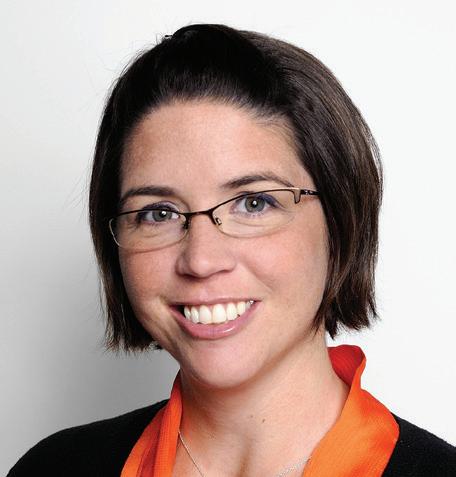
“It’s different from being promoted internally,” he said. “I came into a new firm right away as a partner, which has its own pros and cons. Most of the staff, most of the team, doesn’t know you. It’s important to spend a lot of time up front doing your due diligence and letting them do their due diligence on you.
“For me, it was a process of about three years of meeting with the managing partner every four or five months over lunch to stay connected and see if their needs and my goal of finding a firm closer to home where I could come in as a partner would eventually intersect. It was not an overnight process. You want to do your due diligence to make sure it’s a good feel, a good fit.”
That process helped Thomas, 44, reach a comfort level with the colleagues who would become his new partners and employees. In addition to selling the partners on himself, he was also able to ascertain whether or not UCM was a good cultural fit for him.
“The vision was painted for me,” he said. “I knew what the next five years looked like, and really, what the next 20 years looked like. I didn’t have to come in guessing or wondering.
“That’s a key thing for people in my situation. You have to have a comfort level with the existing partner group, and they have to paint the picture of what your role is and what it’s going to look like. I got all that as part of my move.”
Partners in accounting firms bring a wide variety of skills to the table. Some are your traditional rainmakers, of course, rising to the top based on their ability to generate business. Others bring different skills to the table, be they management acumen, technical skills or something more nebulous.
“We have a partner group of 11 people. Not every one of those people is going to be a rainmaker,” Hammell said. “Some of those people are technicians, and they’re brilliant. I will never hold a candle to their ability to pore over the Internal Revenue Code.”
That can be doubly true for would-be partners in Thomas’s scenario, who are likely to be bound by noncompetition agreements when switching firms. Thomas, who has a noncompete with Cherry Bekaert, was brought on board with the understanding that he would be focusing on elements outside of business development.
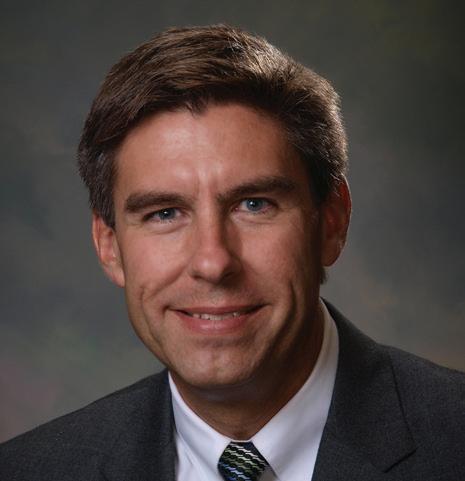
That was good news for Thomas, who has five children and places a high premium on work-life balance. It also meant that he needed to sell himself in other areas.
“One of the other things they were excited about me doing here was that I bring in a lot of ideas as far as practice management,” he said. “We got rid of men being required to wear ties right away. I’m one of the first people here to have a laptop rather than a desktop. There are little things along the way that we’re doing to improve people’s lives here.”
Those kinds of responsibilities can pile up for new partners, who must broaden their focus to areas they hadn’t previously involved themselves with.
“The things I worry about have definitely changed,” Hammell said. “When you’re coming up through the ranks, you’re worried about making sure everything lines up the way it’s supposed to. When you’re a partner, you’re worried about making sure the job gets through, but also that the employees are happy, that the clients are happy, and all the administrative things you never were responsible for before.”
Not every accountant is cut out to be a partner, of course. And even if they were, there aren’t enough spots to go around. But for those who want to make the jump, preparation, due diligence and proactive action are musts — as is building a network that can help you get in position for your next move.
“It’s all about relationships, knowing who to call and knowing they’ll take your call,” Thomas said. “You never know when you’re going to need to make that phone call.”
There’s one more major inflection point in a CPA’s career that we haven’t covered yet — the end. Sometimes you find the end, and sometimes the end finds you. The latter was the case for VSCPA member Sammy Cohen, CPA, whose long career in government and public service in the Hampton Roads area came to a premature end when he suffered a stroke.
Cohen, 65, is quick to point out that he has made a full recovery, but he still elected to call an end to his accounting career. That involved some logistical issues as he worked to help his coworkers at Virginia Beach City Public Schools, where he was director of business services, take over his responsibilities.
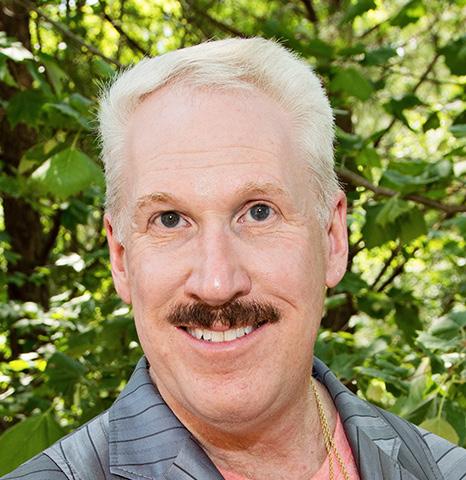
“I had been mentoring and training the business services staff before having a stroke and subsequently retiring,” he said, “and continue to do so via email and visiting the site to answer questions and provide history and insight.”
Replacing that kind of institutional memory is one of the biggest challenges firms deal with when the time comes to replace a longtime employee. Sometimes that means a small firm needs to find someone to take over its clients, whether through a takeover or succession. In cases like Cohen’s, it’s showing the ropes to other employees who then take over the work.
That’s the tack that Phil Umansky, CPA, took in December, when he retired after 27 years as a full-time professor at Virginia Union University (VUU) in Richmond. Because his
was a planned exit — his wife, Carol, retired from her adjunct position at VUU at the same time — he had time to get his affairs in order, so to speak.
“You don’t want to leave work one day and have people calling, saying, ‘Where’s this? Where’s that?’” said Umansky, 59. “I worked over the last month cataloging my files so that whoever took over would be able to find everything.”
sammy cohen, cpa phil umansky, cpa
Just because a CPA is retired from his or her day job doesn’t mean they have to slip out of the profession entirely. While Cohen wasn’t a tax specialist during his career, he’s taken on that role through his volunteer work with the U.S. Internal Revenue Service’s Volunteer Income Tax Assistance (VITA) program, and he’s taken on other responsibilities as well.
“Since retiring, I have been doing more volunteer work, such as volunteering as an instructor and coach to teach personal finance and budgeting to people under the City of Virginia Beach/Hampton Roads Bank On program,” he said.
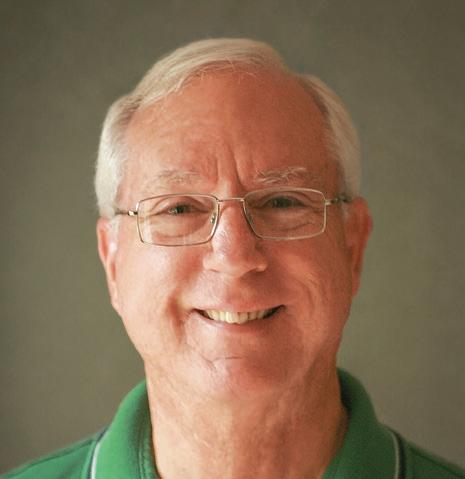
CPE compliance can be an issue if a retiree wants to maintain his or her CPA license. The Virginia Board of Accountancy’s (VBOA) new Active — CPE Exempt status can be an option for some retirees, although licensees must be pre-approved by the VBOA before ceasing CPE compliance.
Keeping up with compliance is especially important for CPAs who plan on continuing to work on a limited basis, like Cohen.
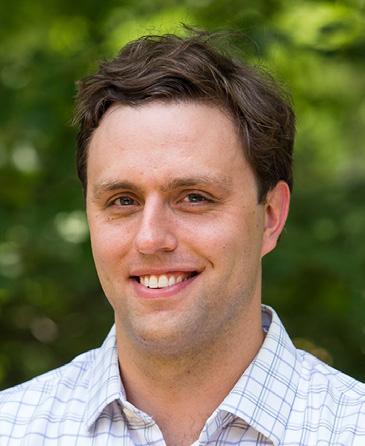
Umansky also falls into that category — he says he’ll likely do some seasonal tax work and take on limited adjunct teaching opportunities.
But otherwise, he’ll be filling his time in other ways — travel and volunteer activities
through the VSCPA and his church. His goal is to strike a balance of enjoying his newfound freedom while still maintaining structure in his life.

“It takes a little bit of decompression to retire,” Umansky said. “You’re always looking at the clock, saying, ‘I’ve got to get here or there.’ When you retire, it’s more of a relaxed lifestyle. The stress and the pressure are less. … But you don’t want to get where you have absolutely nothing to do.”
But his main focus, like that of any retiree, is leading a full, satisfying, healthy life. “Onethird of your life is growing up and one-third is working,” Umansky said. “So hopefully the last third is retiring and enjoying life.” n Chip kniGhtOn is communications manager at the VSCPA, as well as contributing editor at Disclosures magazine. cknighton@vscpa.com connect.vscpa.com/ChipKnighton @ChipKnighton
 by genevieve hancock
by genevieve hancock
Two exposure drafts, many meetings and 485 pages of an accounting standard update later, the Financial Accounting Standards Board (FASB) issued the long-awaited update to lease accounting guidance on Feb. 25, 2016.
The guidance adds a new section to the codification, ASC 842 — Leases. The International Accounting Standards Board (IASB) also released IFRS 16 — Leases during January of 2016. The standards are different in many ways, yet both standards aim to increase the transparency of lease accounting and comparability of the lease commitments across companies’ financial statements.
The effective transition date of the new standard for public entities with a calendar year-end is fiscal year 2019, and allows an additional transition year for private entities. The transition will require a modified retrospective approach, with certain practical expedients as options to ease adoption. Adoption should accurately show all comparative periods presented within the financial statements with consistent application of the new guidance. Early adoption of the guidance is permitted.
By far, the change which will create the largest impact for companies’ financial statements is the new requirement of operating leases with terms over one year to be recorded on the Balance Sheet. Near the end of developing the new guidance, IASB and FASB estimated that this will affect final statements by $3.3 trillion. The new guidance will more accurately reflect the commitments of a company for a time period of over one year.
The first step for classification within the updated guidance is to determine if the arrangement qualifies as a lease. The definition of a lease has been updated within the new accounting guidance as an arrangement in the form of a contract (or part of a contract) which, for a period of time, consideration is given in exchange for a customer having the right to control the use of a specific asset,
and retain substantially all of the economic benefits from the asset during that period of time.
Similar to current lease accounting, classification of leases with periods of over one year will be split into two classification types: right-of-use leases and finance leases. While the wording of the bright-line tests have been removed concerning 90 percent of the fair market value and 75 percent of the useful life of the asset being triggering events, the essence is similar in nature under the new guidance. The new guidance indicates that instead of bright-line tests, any lease in which the majority of the use or substantially all of the fair value of the asset is consumed by the lessee should be treated as a financing lease. In essence, substantially all of the risks and rewards of ownership transfer to the lessee under the lease arrangement. Other items which require that the lease also be treated as a financing lease include leases where the asset is reasonably certain to be purchased by the lessee by the end of the lease, leases where the title transfers to the lessee by the end of the lease, or leases where an asset has a specialized nature and does not have an alternative use to the lessor.
With respect to the updated guidance on measurement of leases, operating leases will be similar in nature to current operating lease guidance. Operating leases should be recorded on the balance sheet at the present value of the lease as both an asset and a liability. The lease expense should be recognized on the income statement, generally through a straight-line allocation. This is different than financing leases in that there should be no interest component of the lease recorded. All cash outflows related to the operating lease should be shown as an operating activity on the statement of cash flows.
Finance leases are similar in nature to current capital leases. An asset and liability are recorded on the balance sheet at the present value of the right-of-use lease. The lease liability principal is amortized over the lease as an expense, and an interest component is also expensed. The principal portion of the lease payments should be classified as a financing activity on the statement of cash flows, while the interest portion should be included in operating activities.
Variable rent payments should generally be excluded from the present value calculation for liability and asset recordation for both lessee and lessor accounting models. The exception to this is a variable payment that is based on a specified rate increase (e.g., a 3 percent increase per year), or an indexation of the rent. Indexation should be calculated taking the rate as of the day of the commencement of each lease.
Accounting for leases under the lessee accounting model changed in the new guidance, more so than the lessor accounting model. As described above, dependent on the classification of the lease type, lessees will need to recognize a right-of-use (ROU) asset and a liability. This will occur for all leases that are not “short-term,” generally implicated as less than one year. The liability should be recorded at an amount equal to the present value of the lease payments.
Right-of-use operating leases should be recorded in total as a lease expense when recognized as an expense on the income statement, whereas finance leases will result in a bifurcation of interest and lease expenses. The discount rate used is the rate charged by the lessor (if readily available) or their incremental borrowing rate if the lessor’s u
is not available. The new guidance allows for private companies to elect use of a riskfree rate, but this is not allowed for public companies. The asset should be recorded at the same value as the liability. Under the lessee accounting model, a finance lease will frontload the interest component of the expense, with a higher interest amount being recorded during the beginning of the lease, and a lower interest expense being recorded near the end of the lease.
The lessor accounting model is similar to the current model in that lessors will classify leases as operating, direct financing or salestype leases. There are specific items within the updated lease guidance, some of which include treatment of initial direct costs, and broad conceptual alignment with ASC 606 — Revenue from Contracts with Customers, the new revenue recognition standard. For direct financing or sales-type lease, the lessor will generally use the rate that they charge to the lessee.
It is also important to note that leveraged leases — a lease that has been partially financed by the lessor through a liability with a third-party company who holds the title to the leased asset — are no longer treated as a separate class of lease arrangement. Leases already in place as of the transition date can continue their treatment as leveraged leases under current lease accounting, but new leveraged leases will be assessed as if they are not leveraged, without any leveraged leasespecific accounting treatment.
Sale leaseback arrangement guidance under ASC 842 — Leases has been amended for treatment of sale leasebacks and failed sale leasebacks. To receive sale leaseback treatment, the arrangement must qualify as a sale under the updated revenue recognition guidance, ASC 606 — Revenue from Contracts
with Customers. Repurchase options are a triggering event for failing sale assessment under ASC 606 (revenue recognition), with the exception of the repurchase option being at fair value and the asset not being specialized. All leasebacks that are finance leases will not be considered as sales. Should the arrangement fail the sale treatment, the financial statements should reflect that the arrangement is, in essence, a financing.
The term “built-to-suit” has been removed from the guidance in relation to sale leasebacks and assessing continuing involvement in failed sale leasebacks; however, the assessment of continuing involvement remains similar to current lease guidance.
Under the new guidance for leases, the definition of initial direct costs that may be capitalizable with respect to a lease has narrowed. The items that are capitalizable under ASC 842 are only incremental costs directly related to the execution of the lease. Generally, this should allow for commissions to be capitalized, and will likely result in more initial direct costs being expensed after the transition to the new lease standard.
The updated guidance within ASC 842 specifies many quantitative and qualitative disclosures within the financial statements, many of which require large amounts of judgment of the management of a company.
Lease modifications under the new guidance determine which modifications or changes to a lease contract should be treated as a separate contract or as the original contract. When an additional ROU asset is granted to the lessee and the lease payments are at an armslength (fair value stand-alone) rate, the lease modification should be treated as a separate contract. All other modifications should likely be accounted by adjusting the discount rate for a change in payment terms as of the date of modification.
There are many other items under the new guidance for leases which have been amended or may need to be assessed for current and prospective lease implementation, and future clarifications and updates may be made by the FASB as we approach the effective date of transition. Overall, the new guidance will make financial statements increase transparency of lease arrangements. This will occur by increasing accuracy in the reflection the financial health of a company by including the lease arrangements a company has committed to within the financial statements. This will also create more comparable financials across companies in relation to liabilities and right-of-use assets. Most companies, especially companies that act as a lessor as well as a lessee or have complex lease transactions will need to gather and reassess most of their leases under the new guidance.
Changes in lease accounting treatment that is determined through reassessment of leases will likely implicate that companies should implement new processes and controls for lease implementation and measurement. n GeneVieVe hanCOCk is a technical accountant specializing in complex modeling and changes in accounting guidance as a senior financial reporting analyst for Disney Parks & Resorts Controllership based in Lake Buena Vista, Fla. She is a member of the Disclosures Editorial Task Force.
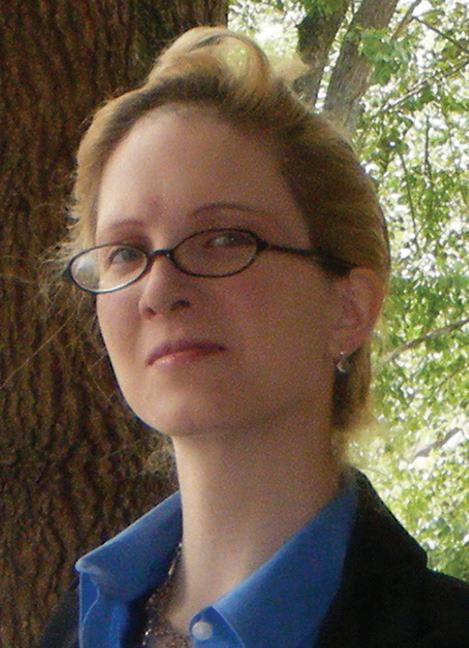
T.Genevieve.Hancock@gmail.com
connect.vscpa.com/GenevieveHancock linkedin.com/in/GenevieveHancock
We’ve profiled Shepherd in these pages before (July/August 2013, if you want to go through your archives) and he’s had some changes in his life. His granddaughter, Hazel, has a new little brother, Harvey. His daughter, Stephanie, is leaving Verus, where she runs the technology department, to move to Colorado.
And that’s fine with Shepherd. Not just because he spends much of his summer each year in his Rocky Mountain vacation home, but because he believes the new freedom can lead to better things for her.
“One thing I’ve always encouraged them to do is whatever they thought was the right thing to do for themselves,” he said. “Whatever that is, the greatest thing a parent can do is to not only raise your children to be wonderful kids and independent, but allow them the opportunity to do what’s truly important for them in life. I support both of them 100 percent in whatever they do.”
That attitude extends to his business philosophy. While much ink has been spilled about the disruptive impact of millennials in the workplace, Shepherd embraces the fresh attitude and aptitude for technology his younger employees bring.
Two years out from his term as chair of the VSCPA Board of Directors, Jim Shepherd, CPA, hasn’t shifted focus from his goal of setting the highest standards possible for the way CPAs interact with and help their clients. He’s just more focused on the micro than the macro.
That commitment to quality, professionalism and kindness — along with a perpetual willingness to help out anyone who asks — is the reason Shepherd is the 2016 VSCPA Outstanding Member of the Year. It’s not just that he’s barely stepped back from his VSCPA volunteer work since ending his term as chair, presenting at conferences and coauthoring the Virginia-specific Ethics course for the first time. It’s the way he’s run his own firm, Verus Financial Partners, and empowered his employees to reach their potential.

“One of the definitions of a leader is somebody who can see into the future and not focus so much on what’s happening today, but set a culture and an environment that’s conducive for people to have a great future,” Shepherd said. “A very humbling thing for leaders sometimes is to make sure that you’re not so in control that it doesn’t allow people who truly can do the very best things they can do to be able to do that.
It’s very important to give young people opportunities to do wonderful things. What you find is that they do things you couldn’t have even envisioned yourself.”
“We probably say the same things that people said about our generation while we were coming up,” he said. “Although people may approach things differently, the issues are not that unlike when we were growing up. They bring profound, wonderful changes to our profession. From our standpoint, one of the best things we can do is make sure we embrace those innovations and really continue to foster an environment that allows them to do what they’re best at and make that huge difference in our profession.”
That was a goal of Shepherd’s during his term as VSCPA chair, but he’s turned inward since his term ended and focused on the goings-on at Verus. He eschewed commission when he started out in the financial planning field, setting up Verus and its predecessor firm, Kuehl, Shepherd, Kozlowski & Associates, on a fee-only basis.
It’s all part of his holistic approach to doing right by his firm’s clients.
“We’re truly trying to make our profession the best we can be, and we’re trying to make a difference in our clients’ lives,” he said. “So we’re not necessarily trying to maximize the dollars we make as much as doing the right things. If you allow that culture to foster and grow, it does enable great success to happen.”
“Our profession is truly a wonderful profession,” he added. “If you understand the finance, it’s amazing what you can do to help people. As CPAs, if we can really be out there genuinely making that difference by truly doing our job, providing the integrity and ethics that go along with our job, it helps our clients and it helps the country. It helps us all to realize that there is a good way to do business.” n
There’s no doubt this year’s Top 5 Members under 35 are the most geographically diverse bunch to win the award. Three winners currently ply their trade outside Virginia, with northern california-based aditya Yerramilli, cpa, taking the crown as the farthest-flung winner.
The thing is, those three winners never left the Vscpa and still clearly care deeply about
the organization. all three have kept up their involvement in Vscpa program planning in the areas of online education, leadership development and the very magazine you’re reading now. The other two winners have worked tirelessly in running the Vscpa’s biggest chapter and helping the firm reach new levels of society engagement. read on to learn more about these upcoming stars.
Melisa Galasso has always kept a local focus in mind in planning her career. But that hasn’t stopped her from staying heavily involved in Virginia, even though she hasn’t lived in the Commonwealth since 2011.
Galasso, 35, got her start with the VSCPA in the Northern Chapter after graduating from Georgetown University in 2003. She’s continued to stay involved in the profession at the local level, currently serving as past president of the North Carolina Association of CPAs’ (NCACPA) Charlotte Chapter.
“I think it gives you that first opportunity to learn to lead,” she said. “I started out just attending meanings, then got involved with the chapter committee. Two years later, I was on the board of the Northern Chapter. It just gives you opportunities to practice leadership in small doses and in the right forum so you can learn.”
But she’s still stuck with Virginia, and the VSCPA is reaping the benefits. She currently serves on the VSCPA’s Online Programs Planning Task Force, where she has played an instrumental role in the rapid changes the Society has made in the online arena. She has also written for Disclosures as recently as this year, and she took on numerous community
engagement opportunities when she still lived in Northern Virginia.
“It was the start in getting involved. I felt like I owed Virginia because they gave me that initial push,” she said. “I’ve never thought twice about keeping my membership for that reason.”
Galasso’s most recent Disclosures article covered upcoming changes to nonprofit financial statements, and it’s just one way she tries to better the profession by informing her colleagues, as well as those just starting out in the profession. She’s taught CPA Exam classes for Becker since 2008 and was named as one of the company’s top 25 instructors nationally in 2015.
She says she especially loves to teach difficult, technical topics that others might shy away from. It’s a way for her to express her love and interest in the profession that grabbed her when she took her required introductory accounting course at Georgetown.
BO Garner, Cpa Manager/co-leader, not-forprofit ServiceS teaM pbMareS, neWport neWS
Bo Garner loves the VSCPA, and he wants you to love it, too. So he focuses on helping his firm take advantage of everything the Society has to offer.
Garner, 30, is the VSCPA’s firm ambassador for PBMares. He works closely with firm administrators at the firm’s Virginia offices to disseminate information and opportunities quickly.
The lifelong Suffolk resident also serves on the VSCPA’s Young Professionals Advisory Council and has been a volunteer and champion for numerous one-off events, including the Nonprofit Finance Summit in April and several speaking opportunities. He also worked on the task force that helped launch the VSCPA’s MentorMatch program last year. He took on the MentorMatch cause largely because of the help he’s gotten from mentors at his own company.
“Even for young CPAs working at firms, you want to have a mentor outside of your own firm so you can see what it’s like from a different perspective,” he said. “I’m fortunate that my bosses have always been there for me to answer any questions that I have. I have the personality where I don’t have difficulty walking into anyone’s office and asking for advice, but a lot of people don’t have that.”
That’s not Garner’s only volunteer cause that sprung directly from his own professional experience. He has helped develop and publicize numerous VSCPA nonprofit events in Hampton Roads after seeing the help and exposure those organizations often need. He
spends a significant amount of professional time working with nonprofits as the co-leader of the nonprofit team at PBMares.
“I was put on some nonprofit audits, and I came to realize the extreme reliance nonprofits have on their CPAs,” he said. “I was on some really messy audits, and I realized that I’m not just checking a box on a report to meet compliance needs. These people really need our help.”
“Being able to work with some of these nonprofits that serve the community and need the help to get their operations and personnel in order was very, very eye-opening for me. “
That passion extends to Garner’s non-VSCPA volunteer work. Some of his philanthropic work is sports-related, befitting his athletic background — he pitched on the baseball team in high school and at Randolph-Macon College before getting his MBA at the College of William & Mary. After graduating, he was treasurer of the board for the Nansemond Suffolk Pop Warner football league and is currently on the committee for the Suffolk chapter of Ducks Unlimited.
He recently joined the North Suffolk chapter of Rotary International, as well as the Hampton Roads chapter of the Association of Fundraising Professionals, where he serves on the membership and publicity committees.
keith Gray, Cpa tax conSultant arlington faMily officeS, birMinghaM, ala.
Keith Gray isn’t forgetting about the VSCPA despite a recent move to a tax consulting position in his native Alabama. Gray, 28, is a member of the Disclosures Editorial Task Force and is continuing that work from afar.
Part of that is that he enjoys writing and keeping abreast of professional issues. But it also speaks to his belief in the work the VSCPA was doing and the opportunity he got as a volunteer with the Society’s Roanoke Chapter.
“It was a chance to lead when someone in my position wouldn’t usually have that opportunity,” said Gray, who was working for the Roanoke office of Brown, Edwards & Co. when he joined the chapter. “Being new to the chapter, new to the state, new to the Society, you wouldn’t usually have the opportunity to lead. I was at the point in my career where I was ready for something like this. The firm was big enough that that sort of opportunity was hard to find, so it provided a gateway to leadership development that I might have never gotten.”
The Roanoke Chapter threw Gray into the fire right away. As soon as he rose to the level of chapter vice president, he was placed in charge of the chapter’s annual two-day CPE event. It’s
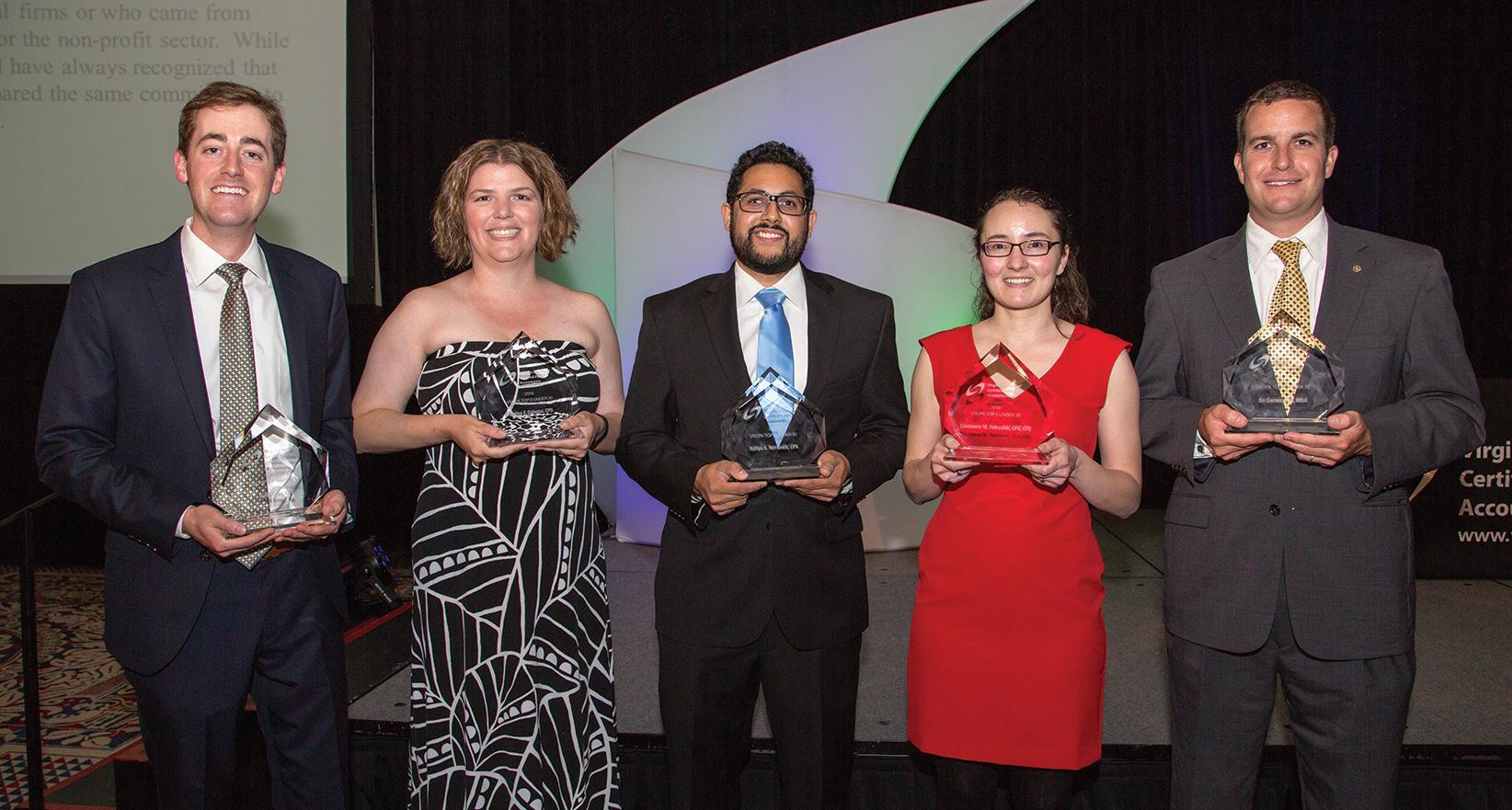
that kind of responsibility that Gray credits with helping develop his leadership abilities.
“You can get out what you put in,” he said. “It forced me to go in there and rather than being a figurehead, I had to get in there and move around some things and make some decisions.”
That responsibility helped Gray grow as a professional within Brown Edwards and develop qualities he’s taking into his new job at Arlington Family Offices, a boutique multi-client family office that provides comprehensive investment and financial services to a small set of multi-generational families. He’s also looking forward to getting a perspective different from that of a public accounting firm.
“There are obviously CPAs serving the tax and accounting functions of the firm, but there are also CFAs, financial analysts, on the investment side,” he said. “There’s also a trust side with former bankers and attorneys. It runs the gamut of financial professional credentials, which is neat. It’s refreshing. I’ve been in a world primarily filled with CPAs for the last five or six years.”
That kind of branching out is nothing new for Gray, who has run the gamut of nonwork interests in his life. Like Bo Garner, he’s a former college athlete — he met his wife, Jennifer, when both were playing on the golf teams at Birmingham-Southern College. The pair got involved with the golf nonprofit First Tee upon moving to Virginia and coached golf at the middle school level in Lexington, where they lived until recently.
Like Melisa Galasso before her, Carolanne Petrusiak is making her mark on the VSCPA’s Northern Chapter. The 30-year-old tax manager at PBMares’ Fairfax office took over as chapter president on May 1 and is excited for the challenge of leading the VSCPA’s largest subgroup. u
But before that, growing up in Markham in Virginia’s horse country, she was the daughter of a small business owner. Her mother owns Richard McKay Used Books in Manassas, and the experience led Petrusiak to focus on helping the owners of similar businesses.
“They’re the stakeholders. They want to focus on the unique services they can provide,” she said. “They’re not as interested in where the debits and the credits go, so I can help with that.”
Petrusiak works primarily with ownermanaged businesses, helping with their audit, internal controls and planning needs. She supplemented the training she received at the University of Mary Washington and in studying for the CPA Exam by obtaining the Certified Fraud Examiner (CFE) credential from the Association of Certified Fraud Examiners (ACFE).
It’s all in the service of helping small-business owners build their businesses and achieve their dreams.
“I love helping them grow their business and to provide assistance so they can focus on what they do best and I can focus on what I do best,” she said. “It’s a good synergy with our clients.”
It’s been helpful for Petrusiak to build her network through her chapter involvement. She has seen how the chapter has helped aging members connect with younger colleagues to pass along their book of business, but for her, the greatest value is in consulting with colleagues.
“Special interest groups get together for networking and consulting,” she said. “We have groups for international tax, forensics and valuations, CFOs and controllers, nonprofits, government contracting, management of an accounting practice and young professionals. They discuss the hot topics within that specific area — things that don’t necessarily come up on your radar day to day. It helps me to stay current and be able to bounce things off people.
“I think the most valuable is just being able to sit down and say, ‘Have you guys ever seen this issue?’”
aDitya yerraMiLLi, Cpa forenSic prograM Manager google, Mountain vieW, calif.
People around the world use Google to supplement their knowledge. Aditya Yerramilli is doing it from the inside. Yerramilli, 28, made the move from the Big Four to corporate compliance and ethics
when he took a job at Google in 2014 after five years in the forensic practice at PricewaterhouseCoopers (PwC) in Tysons Corner. He had come up with PwC, dating back to an internship as a junior at the University of Maryland, but felt it was time for a new challenge.
The biggest reason for the move? To expand his forensic accounting repertoire by taking on a new role. “Firms do a great job of teaching you how to get quality work done, the methodology,” he said. “What’s
The VSCPA welcomed 55 new Life members at its Honors & Awards ceremony May 24. Only 516 members have received the honor, bestowed upon members with at least 40 years of consecutive Society membership, in VSCPA history. The following members earned Life member status in 2016:
Gene aLLenDer, Cpa rOy anDersOn, Cpa paUL BaLLentine, Cpa O. WhitFieLD “Whit” BrOOMe, Cpa FreDeriCk BrOUiLLette Jr., Cpa BrUCe Carter ii, Cpa JOan CLarke, Cpa steVen CLeMOns, Cpa WiLLiaM COLBy, Cpa Garry COLLie, Cpa JaMes COLLey, Cpa Gary COrnWeLL, Cpa nOrMan CreeCh, Cpa DaViD DeJesUs, Cpa patriCia DeVine, Cpa rOBert DOrr, Cpa GeOrGe enGLert, Cpa rOBert FOster, Cpa GreGOry Geisert, Cpa WiLLiaM GreGG, Cpa GeOrGe haGer, Cpa DenVer hiCks Jr., Cpa peter hiLL Jr., Cpa JOhn hinDs, Cpa phiLLip hODGes, Cpa CarL hOLLar, Cpa riCharD JOLLiFFe, Cpa
Bryan JOnes, Cpa rOBert keiter, Cpa WiLLiaM keyseear, Cpa JUanita LeatherBerry, Cpa LaWrenCe Martin, Cpa sharOn MCMiChaeL, Cpa rOnaLD MiLLs, Cpa paUL MUrMan, Cpa DaViD MUrphy, Cpa JaMes O’Brien, Cpa JOeL pOLLarD, Cpa C. riCharD pOWers, Cpa JOhn renner ii, Cpa GeOrGe sCheULen, Cpa rOBert sCOtt
WiLLiaM shOrtriDGe, Cpa aLFreD shrieVes, Cpa eDMOnD sMith, Cpa sUsan sMith, Cpa Lee trainUM, Cpa raLph WaCkenhUt, Cpa Jesse WasserMan, Cpa JaMes WeBster, Cpa C. MiChaeL WinehOLt, Cpa paUL yates, Cpa DaViD ziMMer, Cpa n
challenging is sitting on the side of the consultant, having only that training. It doesn’t give you the full picture of what it’s like to be the client. What are the different expectations and pressures for that client?”
Yerramilli is a forensic program manager on the tech giant’s legal team. He is in charge of global transaction monitoring and forensics focused on mitigating Google’s regulatory risk around the world.
“I collaborate closely with internal audit and our travel and expense teams, keeping a pulse on what Google is paying for globally,” he said. “What transactions should we review to make sure they’re above water?”
He’s banking on the client-side experience proving helpful if he ever makes the move back to public accounting. He’s also enjoyed the more freewheeling environment at Google and in Silicon Valley — including the famous on-site food selection, but also extending to the implication that nothing is impossible.
“One of the things that hasn’t changed between PwC and Google is that both organizations are filled with extremely intelligent, extremely high-caliber folks,” he said. “The difference is that Google feels like an academic environment. Everything is approached with the mindset of ‘How can we help you do this better?’”
Yerramilli clearly agrees with that mindset and takes it to heart in his own dealings with the VSCPA, which have most recently taken the form of his work on the new LEAD initiative. He’s part of the LEAD task force, which took on the mammoth task of assessing the VSCPA’s current leadership opportunities, determining how to package them and identifying resource gaps.
One leadership tenet Yerramilli clearly identifies with is the idea of employee autonomy. That’s one of the factors he enjoys the most at Google.
“You’re looking for ways to improve your processes. They don’t expect you to get it right the first time,” he said. n
Front row: Krystal McCants, CPA; Jill Mitchell; Tara Adams, CPA; Henry Davis III, CPA; Jaime Lynn Dernar, CPA; Stephanie Peters, CAE; Victoria Jones, CPA; Staci Henshaw, CPA. Back row: Jim Phillips, CPA; Ali Gunbeyi, CPA; Gary Thomson, CPA; Bill Hardy, CPA; Richard Groover, CPA; Jennifer Eversole, CPA; Niki White, CPA; Anne Hagen, CPA. Not pictured: Mike Wagner, CPA.
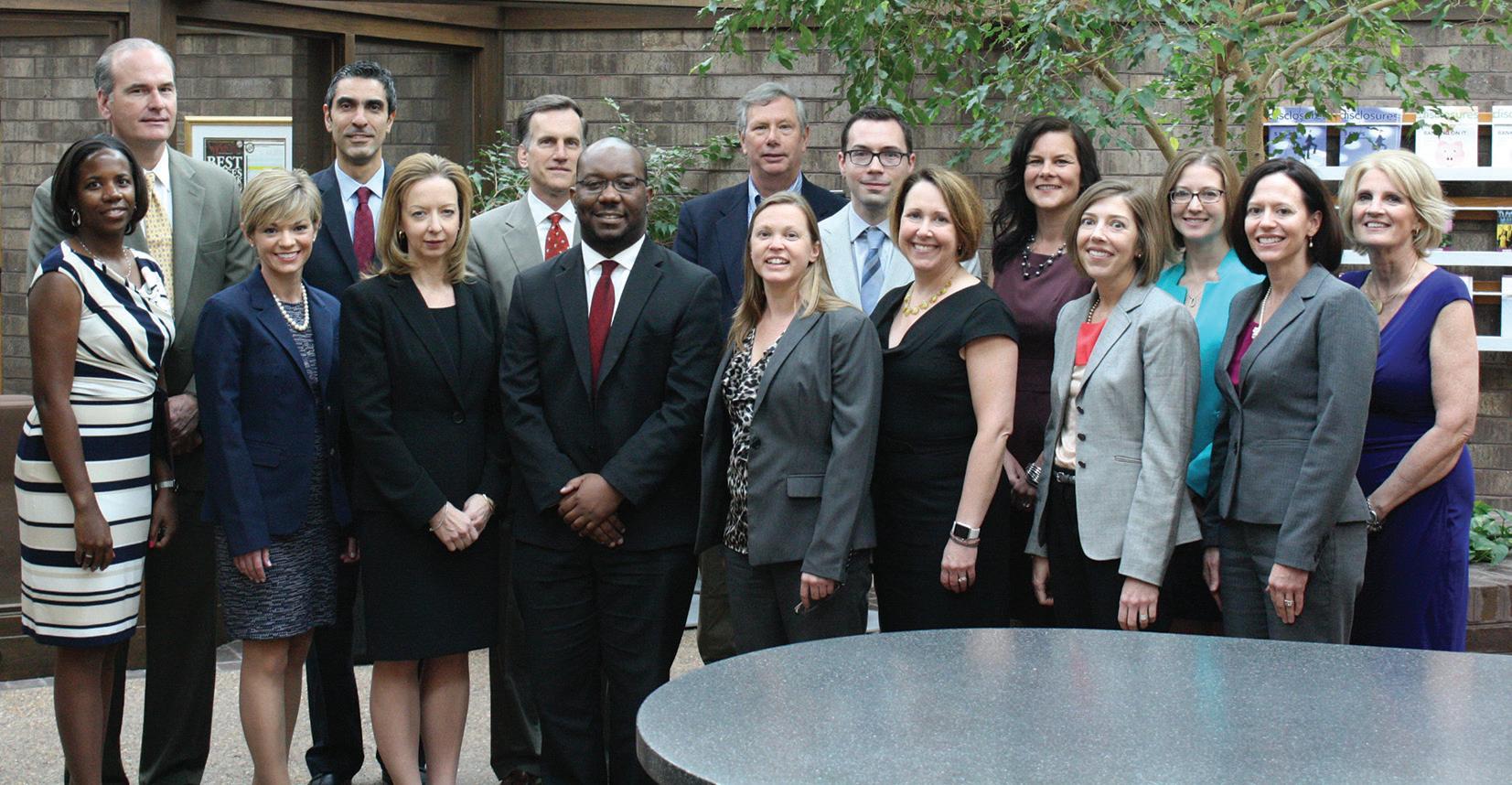
Jim Phillips, CPA, KPMG
Staci Henshaw, CPA, Virginia Auditor of Public Accounts
Richard Groover, CPA Wall, Einhorn & Chernizter
Victoria Jones, CPA, Jones & Company CPA
Gary Thomson, CPA, Dixon Hughes Goodman
Mike Wagner, CPA, GrantThornton
Stephanie R. Peters, CAE
Tara Adams, CPA, Jones, Adams & Delp Henry Davis III, CPA
Virginia Commonwealth University Jaime Lynn Dernar, CPA, MyEyeDr Jennifer Eversole, CPA Management Stack Ali Gunbeyi, CPA, Jones CPA Group Anne Hagen, CPA, Masonic Home of Virginia Bill Hardy, CPA, Harris, Hardy & Johnstone
Krystal McCants, CPA, CST Group, CPAs Jill Mitchell
Northern Virginia Community College Niki White, CPA, First Capital Bank
Due to space constraints, the list of VSCPA 100% Member Firms has been omitted from this issue. Check vscpa.com/100percent for a complete, up-to-date list. n

Jim phillips, cpa, is the 2016–2017 chair of the VSCPA Board of Directors and is an audit partner in KPMG’s Richmond office. He’s the first Big Four representative to lead the VSCPA since Deloitte partner Larry Samuel, CPA, served as chair in 2000–2001.
The chairs since Samuel have represented the diversity of the society coming from small and midsize public accounting firms, with other representatives from corporate finance or the nonprofit realm. Phillips believes that in spite of differences in the different focus of our members on a day-to-day basis, the Society’s work is relevant to all Virginia CPAs whether they work in large firms, small firms, private companies or other areas.
“The VSCPA benefits all firms and members, but sometimes in different ways,” Phillips said. “Some issues that matter to me on a day-to-day basis might not matter as much to other VSCPA members. But we all have a number of common issues, and the benefit of the Society is the same for all of us. No matter how big your firm is or where you’re operating, we’re all CPAs in Virginia, trying to make our profession in Virginia — and everywhere — better.”
That’s the mindset Phillips, 52, has had his entire career. He’s spent his entire career at KPMG, so he could be forgiven for relying on his large employer for his career needs. But that’s doesn’t fit with his mindset.
Phillips’ first foray into CPA society governance came early in his career with the Kentucky Society of CPAs (KyCPA), when working for KPMG in his native Louisville, starting out on the KyCPA insurance committee and eventually working his way onto the Board of Directors.
After a short hiatus from state society work during a six-year stint at KPMG’s office in Mountain View, Calif., in the heart of Silicon Valley,
he eventually decided to move back East to be closer to family and got involved with the VSCPA almost immediately.
“Being involved gave me the opportunity to make an impact in my profession, aside from my day-to-day responsibilities, while at the same time learning how other firms worked,” he said.
What Phillips does every day has evolved throughout his career. He started out in the audit practice, then moved into tax for several years before going back to audit. His client base has changed over the years, starting with a great deal of banking clients, then shifting to those with a technology focus when he worked in Silicon Valley, with his current focus for the last 10 or so years primarily serving multinational companies, both large and small in size.
Phillips has been fortunate to have had opportunities to travel to a number of foreign countries during his career and says that the most interesting place work has taken him is Penang, Malaysia. “A huge benefit of my career has been the opportunity to visit other countries,” he said. “It gives you a new perspective on what we have in the U.S.”
That’s been quite humbling for Phillips, who gravitated toward accounting at St. Xavier High School in Louisville. He still wasn’t entirely sold, going to Newberry College in South Carolina with the goal of becoming an orthopedic surgeon. All the lab work involved in that career path conflicted with other obligations for the 6’ 7” Phillips, who was also a forward on Newberry’s basketball team, but the medical ambition dreams and basketball career both ended when he transferred to Eastern Kentucky University (EKU) and rediscovered accounting.
He joined KPMG after graduating from EKU, and despite all the travel and office-switching, he’s been a company man ever since. He’s also been a Society man, first in Kentucky and now in Virginia, and wants to use his own career to help show aspiring CPAs how they can have a rewarding accounting experience.
“Students today have a number of options regarding which profession they chose to pursue,” Phillips said. “I’d like to be part of the group helping our profession showcase how being a CPA can be the foundation for a robust career with unlimited opportunities.” n
As a reminder, we’re quizzing two VSCPA members — a seasoned CPA and a young professional — about their views on leadership issues affecting the profession and how they would (or do) deal with those issues.
On the hot seat this month are krystaL McCants, Cpa, of CST Group, CPAs, in Reston, and Gary thOMsOn, Cpa, of Dixon Hughes Goodman in Richmond. We asked them:
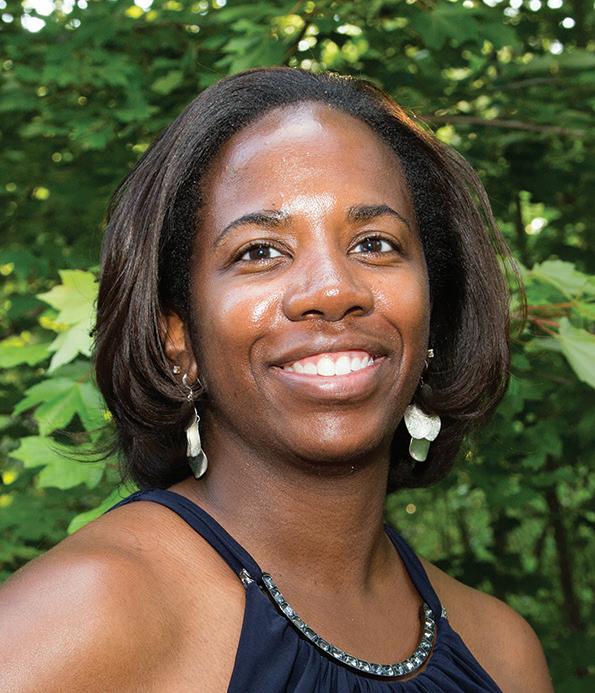
What life and career advice do you generally offer new hires at your firm?
kM: The most important thing that new staff — especially those starting right out of college — should remember is that you need to give yourself time. So much information is thrown at you when you start a new job that it can be completely overwhelming. Whether you are experienced or not, learning the firm’s processes along with meeting new peers and rising to the expectations of new managers can be a daunting experience. It is important to know that everyone remembers when they first started and they expect that there will be a learning curve. For those of you who have just graduated, don’t be surprised if it takes you a year before you feel comfortable in your new job. When you allow ample time to absorb information, you will find everything begins to come much more naturally.
My advice about life and your career would be to choose carefully and wisely. Think about what you would want to spend your future doing. There are so many options in the accounting industry, not just public accounting. That said, public accounting is a great field; it allows you the opportunity to meet so many different people and be exposed to
Visit the VSCPA LEAD website at www.vscpa.com/LeaD for leadership development articles, resources, training and more.
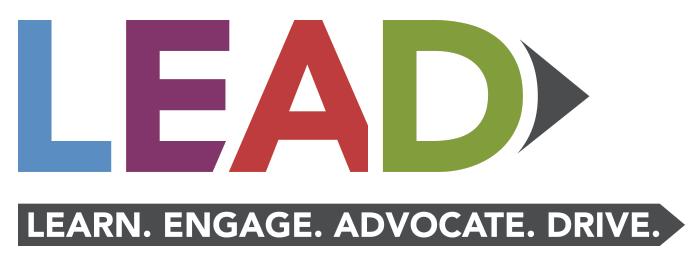
a variety of industries. Yes, it is tough for a few months out of each year, but that is outweighed by the rewards and the growth that comes as a result of the challenges. Whatever you decide to embark on, give it your absolute best effort and if the fit doesn’t seem right after a few years, try something new. There are so many different directions that an accounting career can take you if you are willing to take that first step.
Gt: It is interesting to phrase the question as a life-and-career-advice question, as we tend to get asked about how to progress in a career. Now into my 31st year of my career, I see the proverbial pendulum swinging back to a more balanced approach. Whether you call it worklife balance, life-work balance, flexibility or many other similar titles, it is critical you find the right balance for you and your life. That balance will be unique to you. To accomplish your life and work aspiration I encourage our new professionals to:
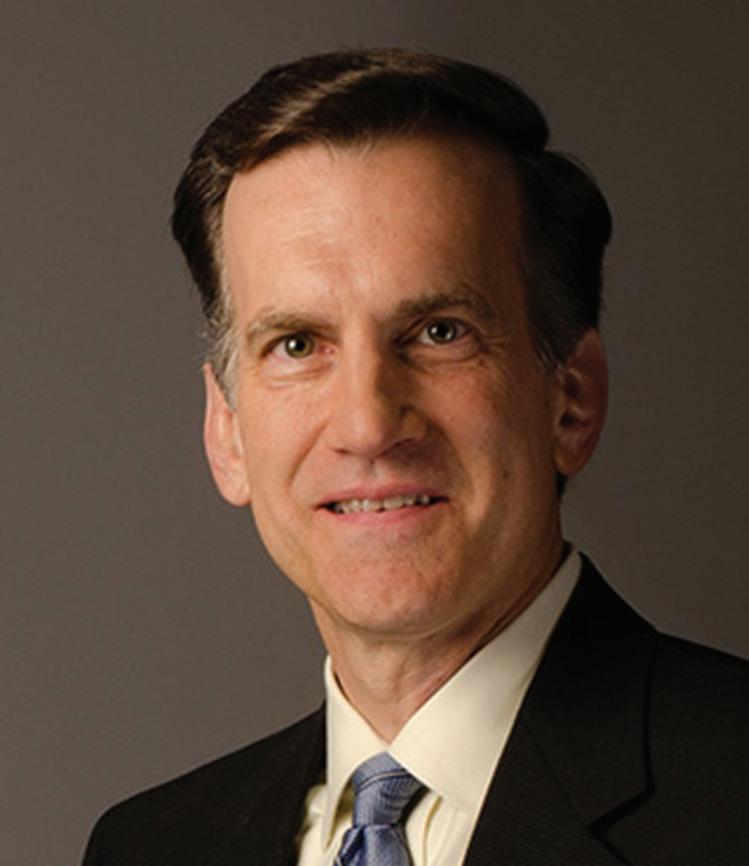
>> set goals, both personal and professional. Allow these goals to be your point of reference and motivation.
>> be genuine. There will be pressure to be like others. While we all need to be agile and improve on our weaknesses, we also need to be ourselves.
>> never stop learning. Whether it is the technical requirements of being a CPA or the evolving landscape of business, the world is not sitting still and neither should you.
>> set priorities. Using your goals as a guide, balance the various demands of your career by knowing what’s more important at any given time.
>> Find a sponsor. A sponsor is more than a mentor. He or she is someone who will invest in you, use political capital to help advance your career and take pride in your success.
>> be a team player. While goals are personal, what we do for a living requires a team effort for success.
>> own your career. Wake up each day with the enthusiasm to distinguish yourself in whatever tasks that day holds.
Public accounting is a great career, enjoy both the challenges and the rewards … they will both come in bunches! n
MiChaeL hanGer, Cpa, has moved from Dixon Hughes Goodman’s Richmond office to its Norfolk office.
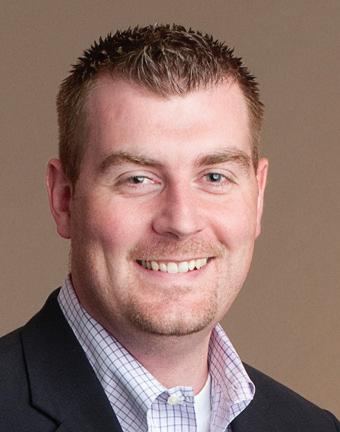
anGeLa sheaLy, Cpa, has been named senior vice president at TowneBank in Portsmouth.
ChristOpher MahOn, Cpa, was named managing partner at CohnReznick in Tysons Corner. kathLeen DaVanzO, Cpa, and henry petersen, Cpa, were named senior managers at Jones CPA Group in Norfolk.
DaViD priDDy, Cpa, was elected treasurer of the Virginia Farm Bureau Federation, the Virginia Farm Bureau Mutual Insurance Company and all affiliated and associated companies.
Rockville, Md., firm arOnsOn was named to The Washington Business Journal’s “Best Places to Work” list for the Washington metro area.
Richmond firm MitCheLL, WiGGins & CO. won a YP Workplace Award in the Small Business category from ChamberRVA,
FranCis “BUD” hOrnik, Cpa, of Chesapeake. A U.S. Army veteran who served in the Vietnam War, he graduated from Old Dominion University and was active in the VSCPA’s Tidewater Chapter.
Wayne MCMiLLan, Cpa, a VSCPA life member from Forest. He graduated from Duke University and Richmond Professional Institute (now Virginia Commonwealth University).
BarBara sWensOn, Cpa, of Manassas. She graduated from the University of Iowa and Indiana State University and was a CPA Day of Service volunteer.
tOM thOMpsOn, Cpa, of Gainesville. He was active with Sudley United Methodist
Church, where he served as lay leader of the Arlington District and was associate lay leader of the Alexandria District at the time of his death. He was a member of the Virginia Conference Council on Finance and Administration. He was retired from Buchanan & Co.
Wayne WiLLiaMsOn, Cpa, of Midlothian. A U.S. Army veteran, he graduated from Virginia Commonwealth University (VCU). He worked for Harris, Hardy & Johnstone in Richmond and taught accounting classes at Midlothian High School and VCU. He was a founding member of the Construction Financial Management Association and a member of the Chesterfield Jaycees and the Midlothian Ruritan Club. n
formerly the Richmond Chamber of Commerce, for its efforts in attracting, retaining and developing young professionals. Cherry Bekaert was nominated for the same award in the Large Business category.
BrOWn eDWarDs has acquired Roanoke firm JOhnsOn, eQUi & CO. n
GaBrieLLe BriGGs, Cpa JOCeLyn BUDa, Cpa VaLerie COLe, Cpa sVaMaL De FOnseka, Cpa DOnaLD DeeDs, Cpa ashUtOsh GOkhaLe, Cpa aLeXanDer Grant, Cpa risa GreGOs-MOUrGinakis, Cpa Xinya GUO, Cpa shannOn LanGLey, Cpa ChristOpher LasaM, Cpa BrenDa Li, Cpa keVin Linhart, Cpa GeraLD MaCaULay, Cpa DiLyana MarkOVa, Cpa renae MiskOWiC, Cpa sparsha nayak, Cpa ViCtOria nGUyen, Cpa Bette Otts, Cpa FUnMiLOLa shittU, Cpa MattheW sOntaG, Cpa kristOpher stein, Cpa LaWrenCe sUGar, Cpa CheLsey treVinO, Cpa hUOnG trUOnG, Cpa eJaz yOUnas, Cpa LihUa zhanG, Cpa
List from April and May. Compiled June 1, 2016. n
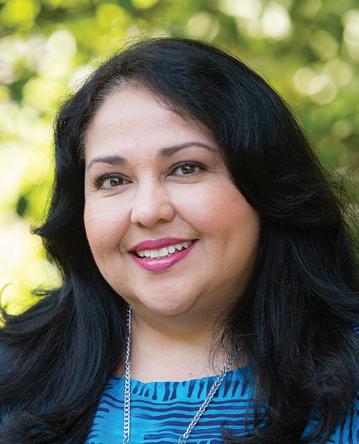
The VSCPA was honored with a Commonwealth Award of Merit in the public service category of the 2016 Virginia Public Relations Awards, sponsored by the Richmond Chapter of the Public Relations Society of America, for “You Can Afford College: A Financial Fitness Initiative.” The Society developed the program as a public service in response to the crisis surrounding college affordability and student debt and partnered with three Virginia legislators — Sens. Mamie Locke (D-Hampton), Louise
Lucas (D-Portsmouth) and Donald McEachin (D-Richmond) — to bring college affordability workshops to underserved and low-income constituents in their districts. Topics covered included college savings plans, financial aid, grants, scholarships, loans and tax credits.
The VSCPA is currently in the process of planning future events and sharing the presentation with like-minded organizations nationwide. Visit vscpa.com/ youCanaffordCollege n
CPA Day of Service is only a few short months away! Join your colleagues in representing the CPA profession and making a difference in the community on FriDay, sept. 23
Hundreds of CPAs and employees of accounting firms across Virginia volunteer each year as part of CPA Day of Service, working at volunteer locations for a variety of organizations and causes and including both indoor and outdoor projects. We’d love to count you among them!
For more information, visit vscpa.com/Dayofservice or contact VsCpa Member engagement
Manager Laura Cobb, Cae, at lcobb@vscpa.com. n
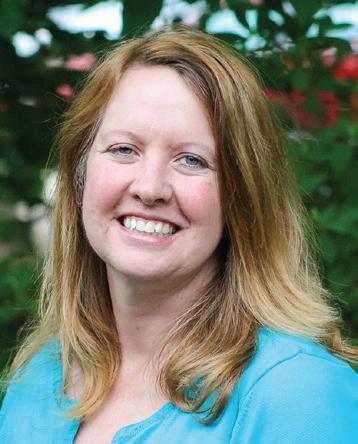
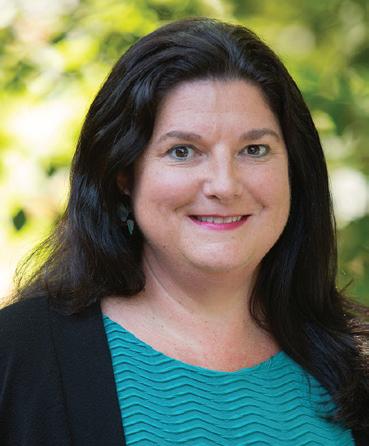
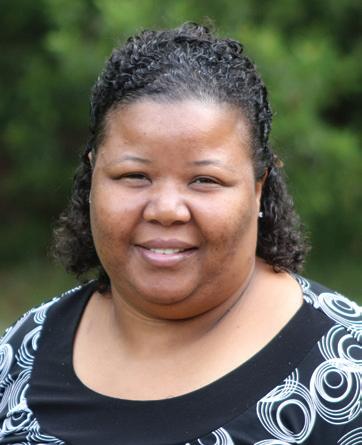

Bottom: Beth Bickford, CPA, Laura Cobb, CAE, Zané Mullins, Amanda Arnold
Member Relations Coordinator rOCiO GiBBs celebrates her 18th anniversary with the VSCPA on Aug. 13. Career & Leadership Development Director MOLLy Wash, Cae, celebrates her 12th anniversary on July 26 and Member Relations Director BrenDa FOGG, Cae, marks 11 years on July 11. Regulatory & Legislative Affairs Manager Darshae DaBney celebrates nine years with the VSCPA on July 9. Vice
Beth BiCkFOrD, Cpa, celebrates her seventh anniversary on July 14 and Education Manager zanÉ MULLins marks three years on Aug. 12. Member Engagement Manager
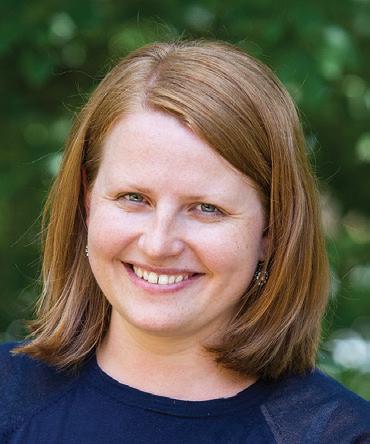
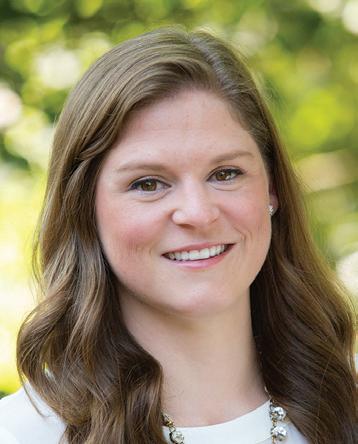
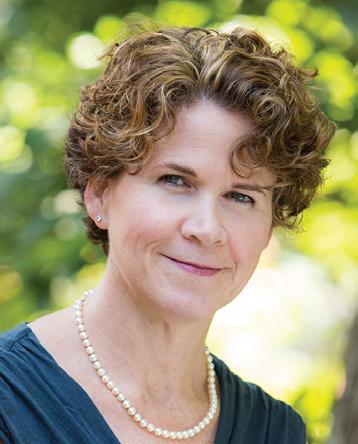
LaUra COBB, Cae, celebrates her fouryear anniversary on Aug. 6 while Membership Marketing Specialist aManDa arnOLD marks one year on July 7. n
Visit vscpa.com/Cpe. Choose “On Demand” from the side filters to find the exam and others from previous Disclosures issues. n
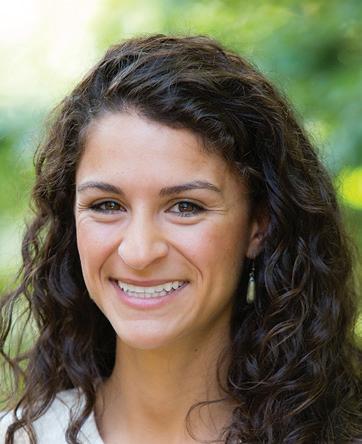
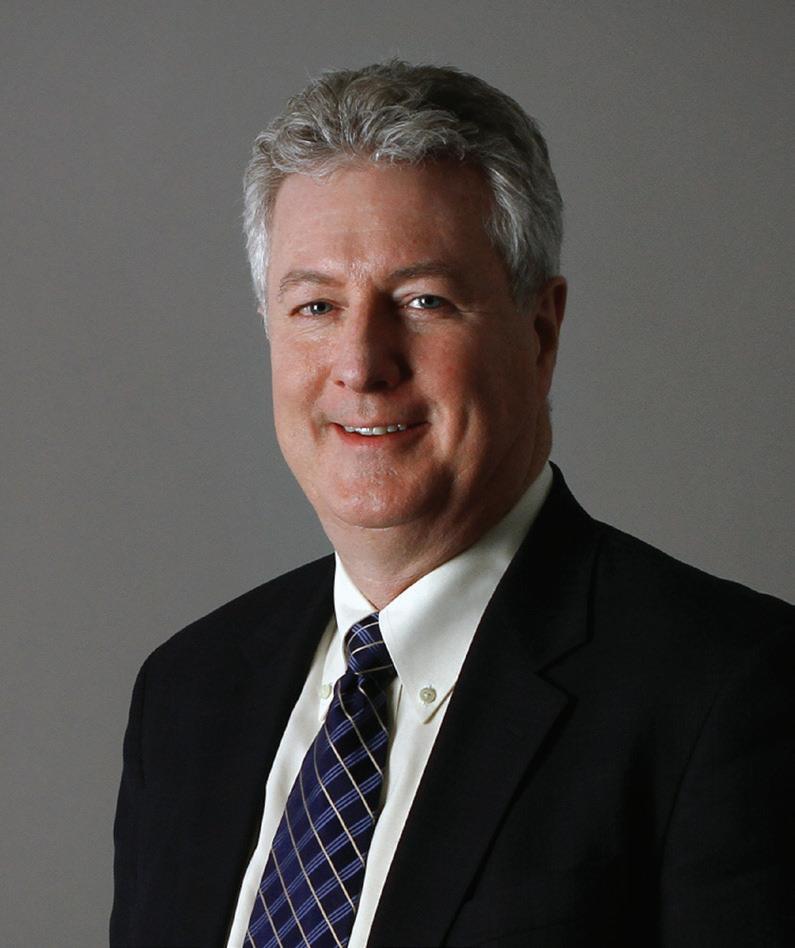
rick white, cpa, has always put his clients first, even at the expense of his own happiness. But it usually winds up working out for him in the end.
White, the new chair of the VSCPA Educational Foundation, found himself at a professional crossroads several years ago as managing partner of Fairfax firm Swart, Lalande & Associates. White loved the small-firm lifestyle and could have kept on happily, but felt his book of clients would be better off with the resources of a larger firm. So he did what was right for the clients and successfully sought a merger with regional firm Dixon Hughes Goodman in 2011.
It wound up being the right move, unequivocally. The increased resources and services convinced clients to stick around, and working for a regional firm has been much better than White thought it would be.
“I was not a proponent of merging with a bigger firm,” he said. “I did not think I would like it, but it’s been extremely rewarding for me, both personally and professionally. It’s been rewarding for me, for the people who came with me and the client base. I’ve had very little client turnover in that regard.
“I didn’t know what I didn’t know. That’s the cliché phrase, but when we first joined Dixon Hughes Goodman, the first week I was down in Charlotte at an industry meeting, I got to meet a number of people who, to this day, I talk to several times a month on various things. “
White has a history of changing his plans on the fly, with good results. An Alexandria native, he entered George Mason University (GMU) as a math major, but rethought that after his first semester of higherlevel math courses. So he switched into accounting — following in the footsteps of his father and first employer, the late Donald White — and discovered it was the perfect career for him.
“I never thought in a million years that I would be able to do a tax return. They looked really complex,” he said. “But my second semester in school, I enrolled in the introductory accounting class and ate it up. It made sense to me. So I changed everything into the business school and concentrated on accounting. It’s been an extremely rewarding career.”
That career started out in his father’s firm before taking him to Swart for the first of two “tours” (his phrasing). In between, he worked as controller and then CFO at the Virginia Housing Corporation. He moved back into public accounting at Swart when the housing industry went south in the downturn of the early 1990s, armed with a new level of inside experience with the construction and real estate industries.
“I never wanted to be buttonholed into every industry early on,” White said, “but as I got to understand it and all the
special areas that go into it, it really was interesting work. I gravitated to it.”
Now he takes over the Educational Foundation with the goal of increasing awareness of its activities and upping fundraising. He hopes to put Foundation board members in front of VSCPA members at every opportunity, with representatives at all the major conferences and CPE functions.
“We’ve had a record year of people applying for scholarships, so there’s a need out there,” he said. “It’s an important thing. Our mission is to inspire and support future CPAs, and I want to make membership much more aware of what we do and how we affect the future of the professions.” n
by donating to the Educational Foundation, you help accounting students reach their academic and career goals.
Donate today at VsCpa.com/ DonateFoundation.
VsCpa GraDUate sChOLarship ($1,000)
Jack Melhorn, University of Virginia
VsCpa MinOrity sChOLarship ($1,000)
Mari Baz, George Mason University
Grishma KC, George Mason University
Tracey Le, George Mason University
VsCpa UnDerGraDUate sChOLarship ($1,000)
Selmira Avdic, University of Richmond
Courtney Donovan, College of William & Mary
Brooke Miller, Averett University
Jessica Miller, George Mason University
Emma Robinson, College of William & Mary
VsCpa ph.D. sChOLarship ($5,000)
Edward Lynch, CPA, Virginia Commonwealth University
VirGinia teCh DOCtOraL sChOLarship ($2,500)
Trent Henke, CPA, Virginia Tech
thOMas M. Berry Jr., sChOLarship ($2,500)
Caitlin Bare, College of William & Mary
VsCpa past presiDents/Chair sChOLarship ($1,000)
Katherine McVey, College of William & Mary
Cst GrOUp sChOLarship ($2,500)
Iliana Montoya, George Mason University
DiXOn hUGhes GOODMan sChOLarship ($2,000)
Madeline Cutler, Washington & Lee University
Maddie Sanford, College of William & Mary
h. BUrtOn Bates Jr. sChOLarship ($2,000)
Bradlee Rogers, Radford University
kearney & COMpany sChOLarship ($2,500)
Ameera Choudhury, George Mason University
Joseph Mills, Virginia Tech
MiChaeL e. Mares sChOLarship ($3,500)
Sayed Akbari, Virginia Commonwealth University
MJW sChOLarship ($3,500)
Ryan Vosburgh, University of Virginia
VerUs FinanCiaL partners sChOLarship ($2,500)
Miranda Melton, Lynchburg College
WaLL, einhOrn & Chernitzer sChOLarship ($2,250)
Christopher Davenport, Old Dominion University
yOUnt, hyDe & BarBOUr sChOLarship ($2,500)
Jason Jones, University of Virginia n
Chair Rick White, CPA, Dixon Hughes Goodman
Chair-eLeCt
Thomas Crutchfield, CPA, Burdette Smith & Bish
ViCe Chairs
Randy Spurrier, CPA, Old Dominion University
Kristin White, CPA, WellsColeman
seCretary/treasUrer
Tina Bates, CAE, VSCPA
at-LarGe DireCtOrs
O. Whitfield “Whit” Broome, CPA University of Virginia School of Law
Holly Caldwell, CPA, Bridgewater College
Melinda Coley, CPA Anthem, Inc.
Brian Deibler, CPA, Malvin, Riggins & Co.
Chris Ekimoff, CPA, FTI Consulting
Chris Enright, CPA, Christopher A. Enright, CPA
Heather Flanagan, CPA, KPMG
Dan George, CPA, USAC
Nick Harrison, CPA, Dixon Hughes Goodman
Clare Levison, CPA, Alliant Techsystems, Inc.
Thomas Lyden Jr., Kearney & Co.
Carolyn Menzie, CPA, CST Group, CPAs
Melanie Randall, CPA McKinney & Co.
Michelle Smelser, CPA RR Donnelley
thinkinG OF seLLinG yOUr Cpa FirM? Please download our free Succession Planning Guide by visiting http:// poegroupadvisors.com/selling/. Create a transition you can be proud of! To learn more, contact us at 1.888.246.0974 or email us at info@poegroupadvisors.com.
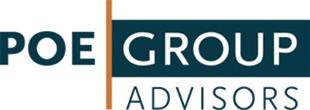


saLe/MerGer OppOrtUnity — Well–established and diversified small Burke VA CPA firm seeks sale/merger opportunities. Practice clientele includes annual reviews, compilations and monthly accounting services. The firm has a significant individual income tax practice as well as a variety of business tax returns. The firms enjoys a long-standing on-site and unqualified or pass peer review history. In 2014 the firm’s only two audit clients were transitioned to a review level service. The firm is that of a sole practitioner seeking retirement or semi-retirement over the next 18 months. Growth and referral opportunities are excellent. Reply in confidence to #99, VSCPA, 4309 Cox Road, Glen Allen, VA 23060, or email disclosures@vscpa.com. Please put “Blind Box 99” in the email subject line.
classified ads are a great way to reach Vscpa members — 94 percent rate the information in Disclosures as excellent or good. what are you waiting for?
Contact us at classifieds@vscpa.com or visit vscpa.com/Classifieds for rate information. Members receive a discount.

Thinking of selling?
the
about
by going
by

the
with
